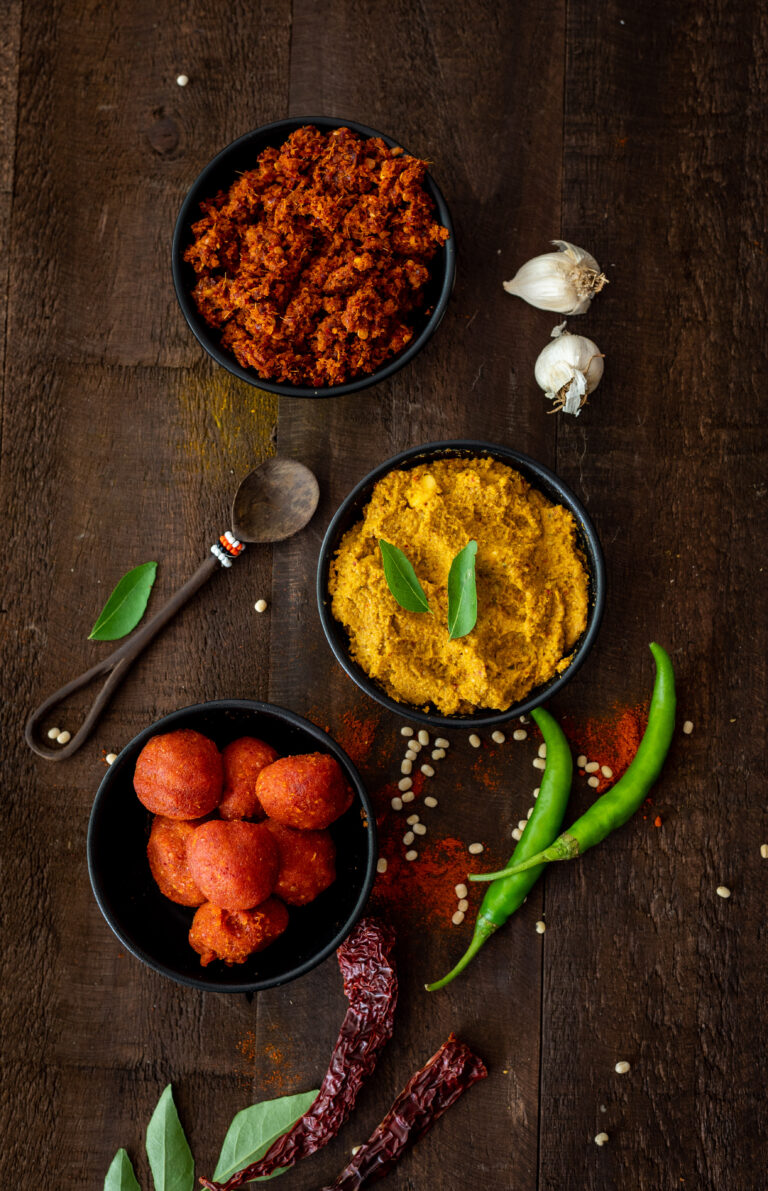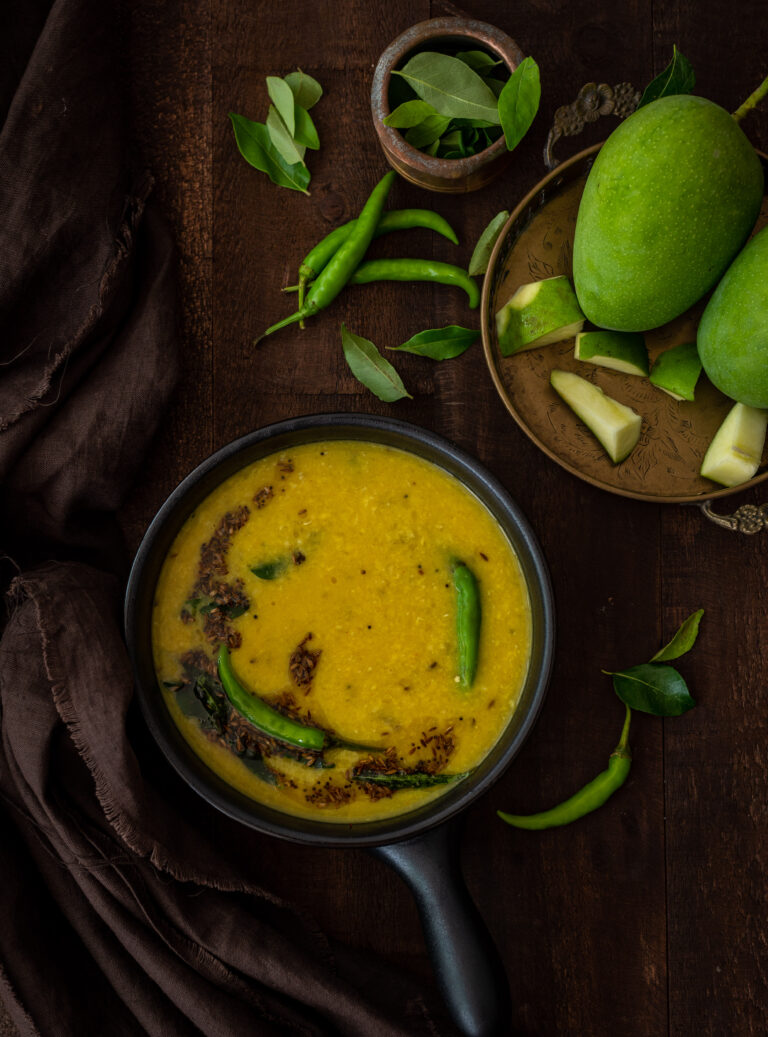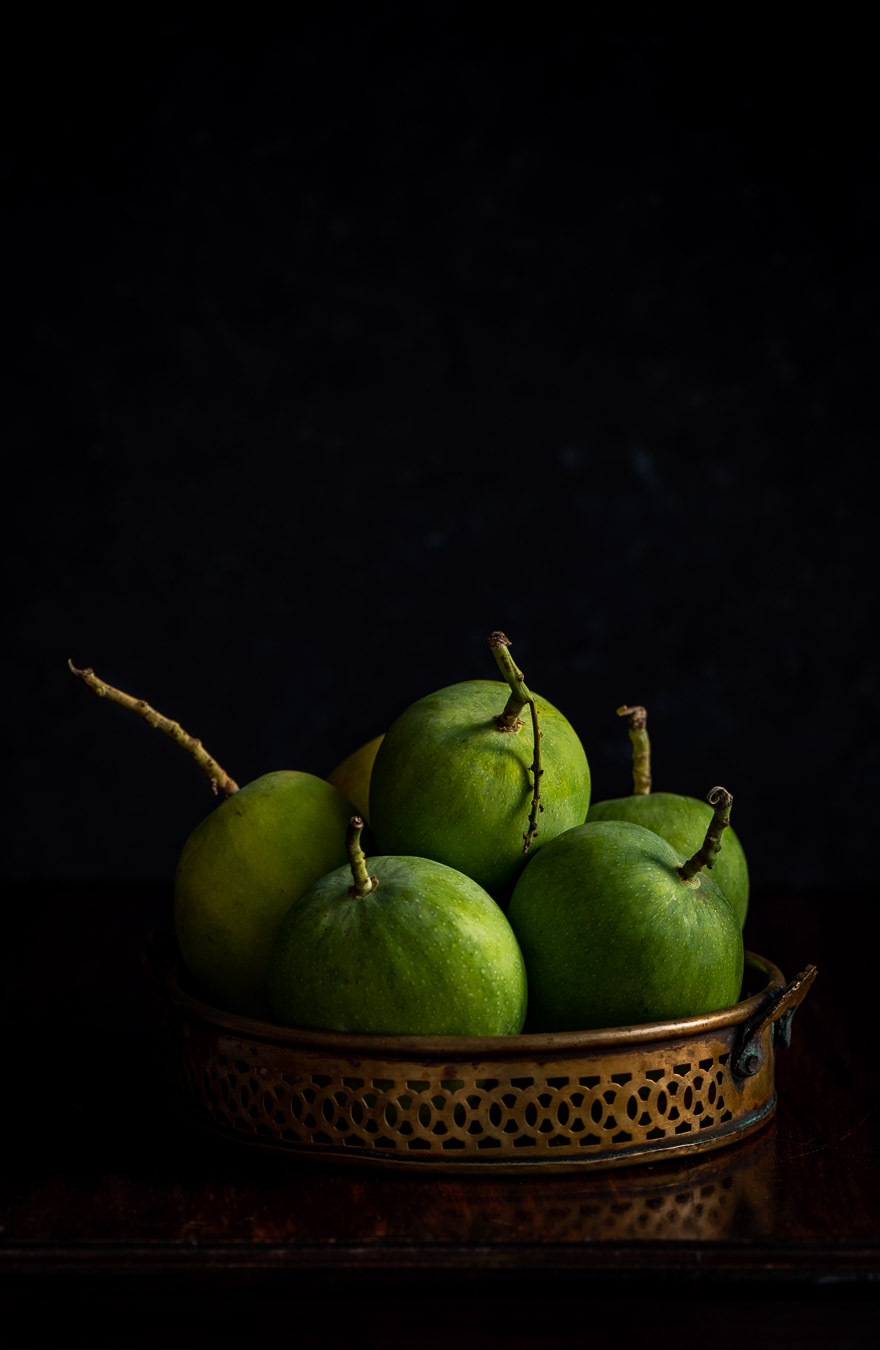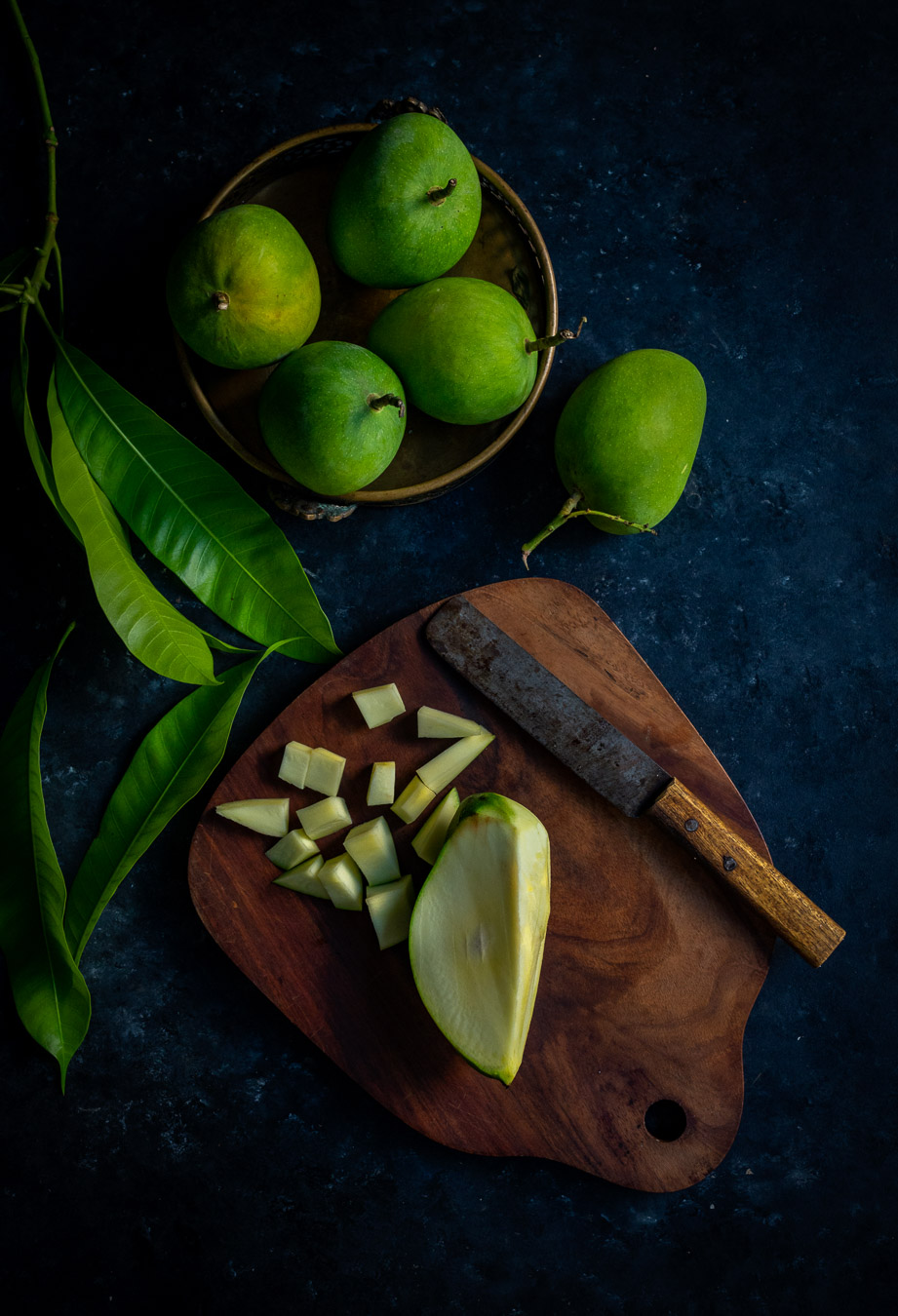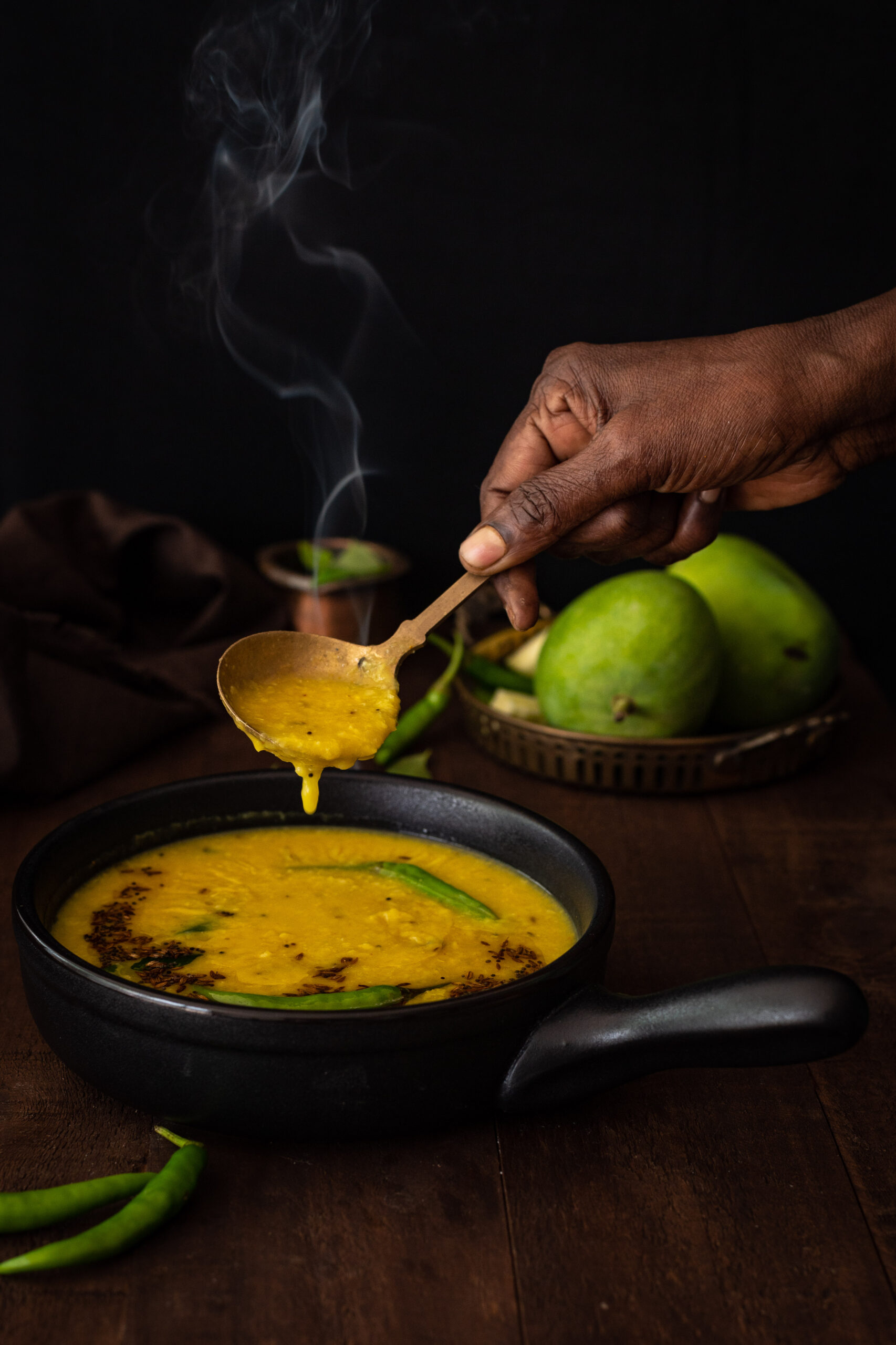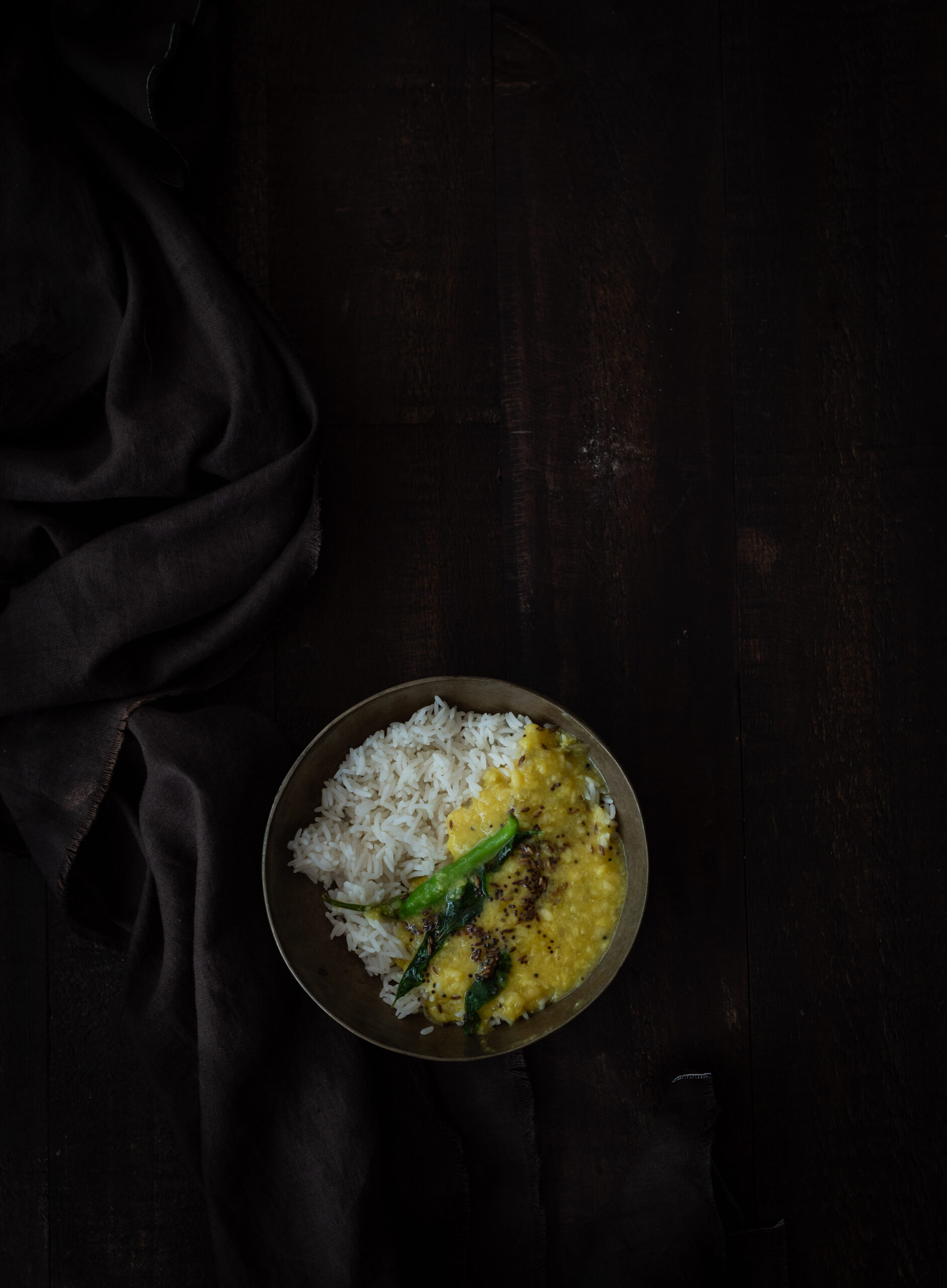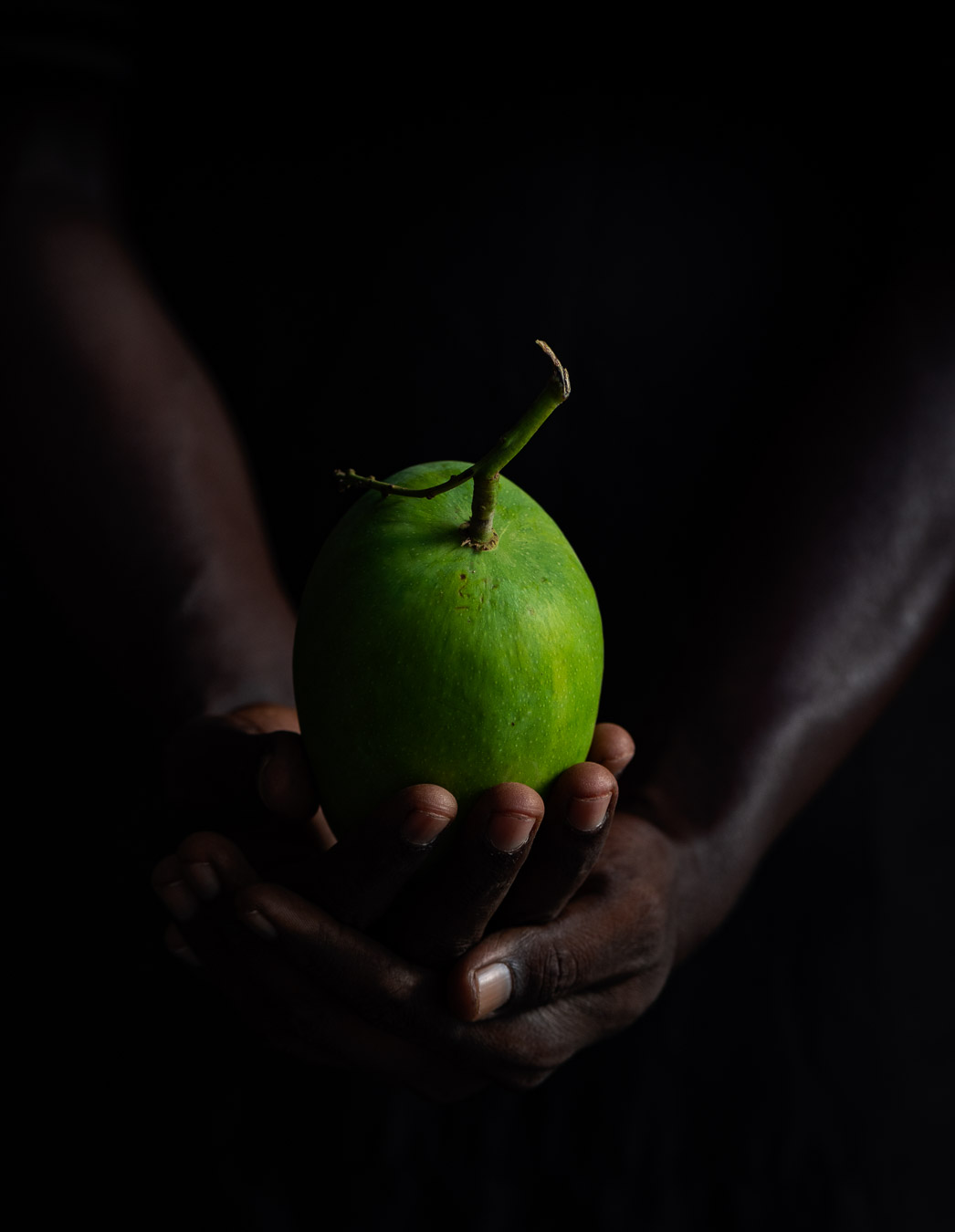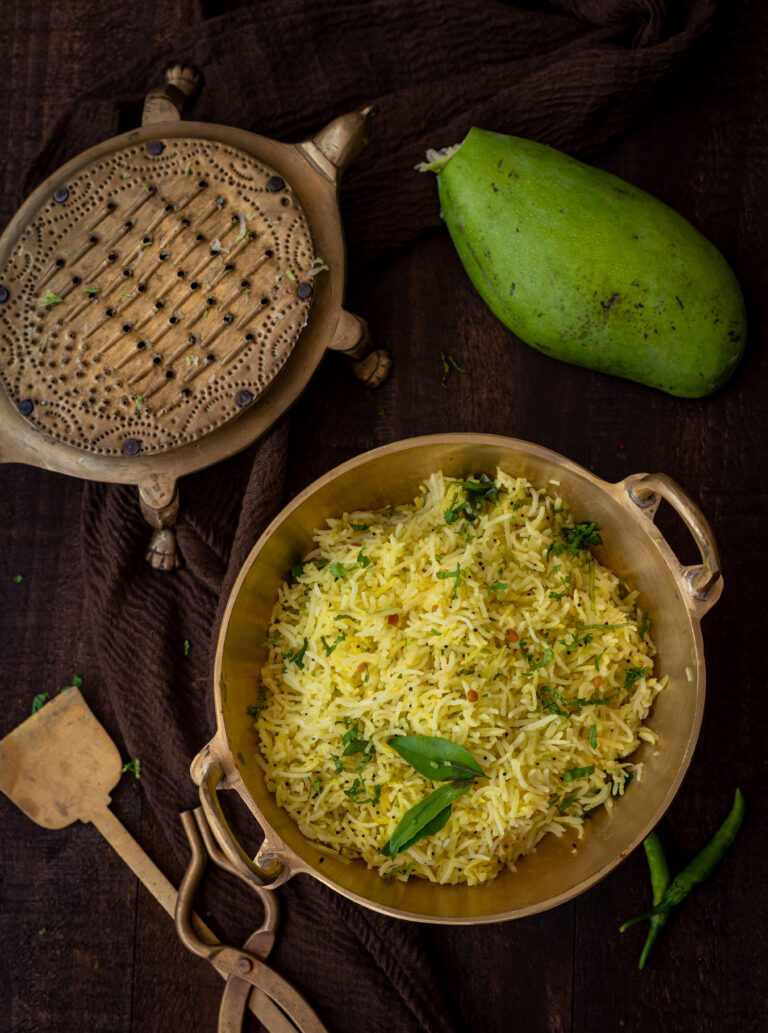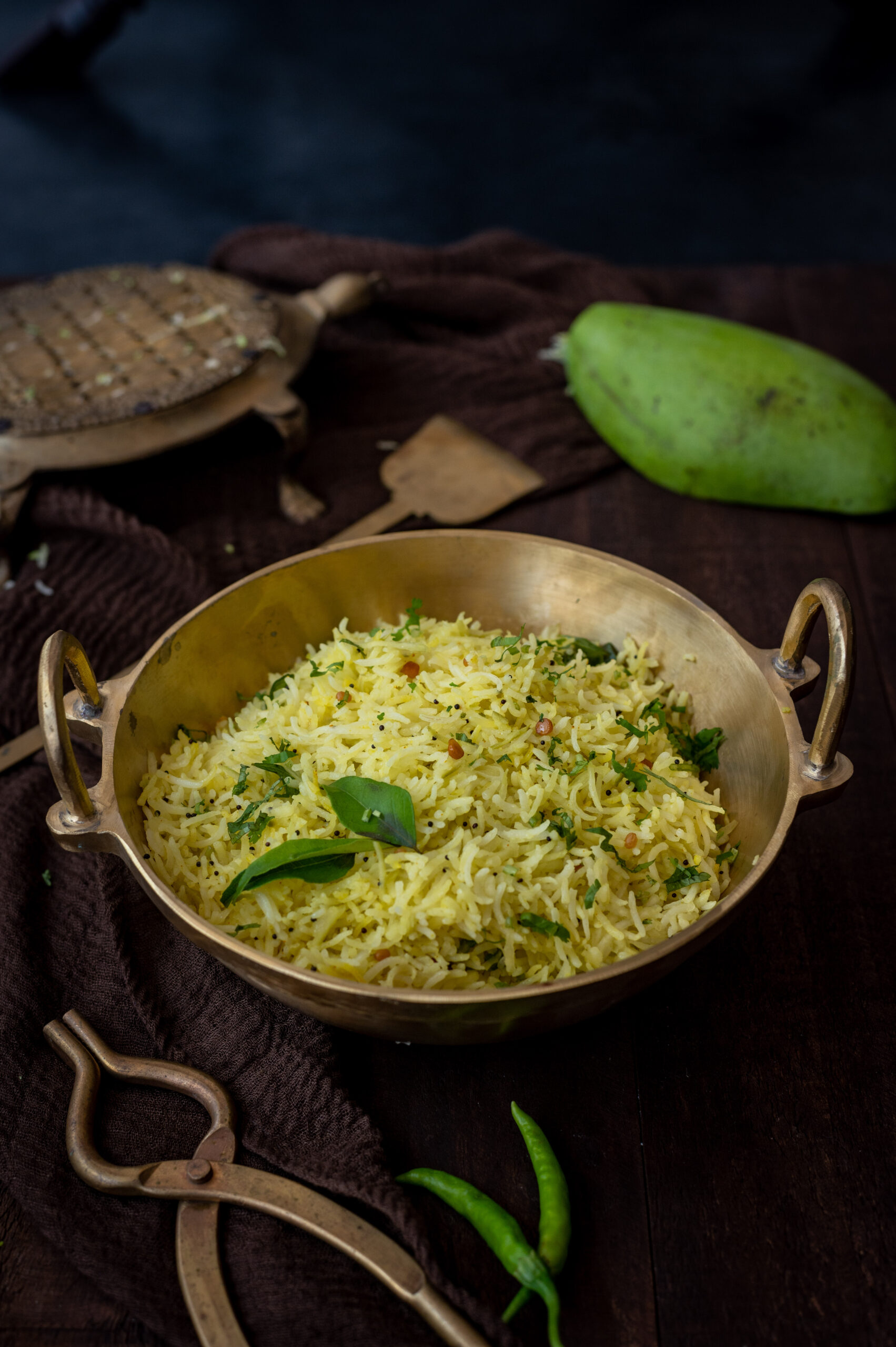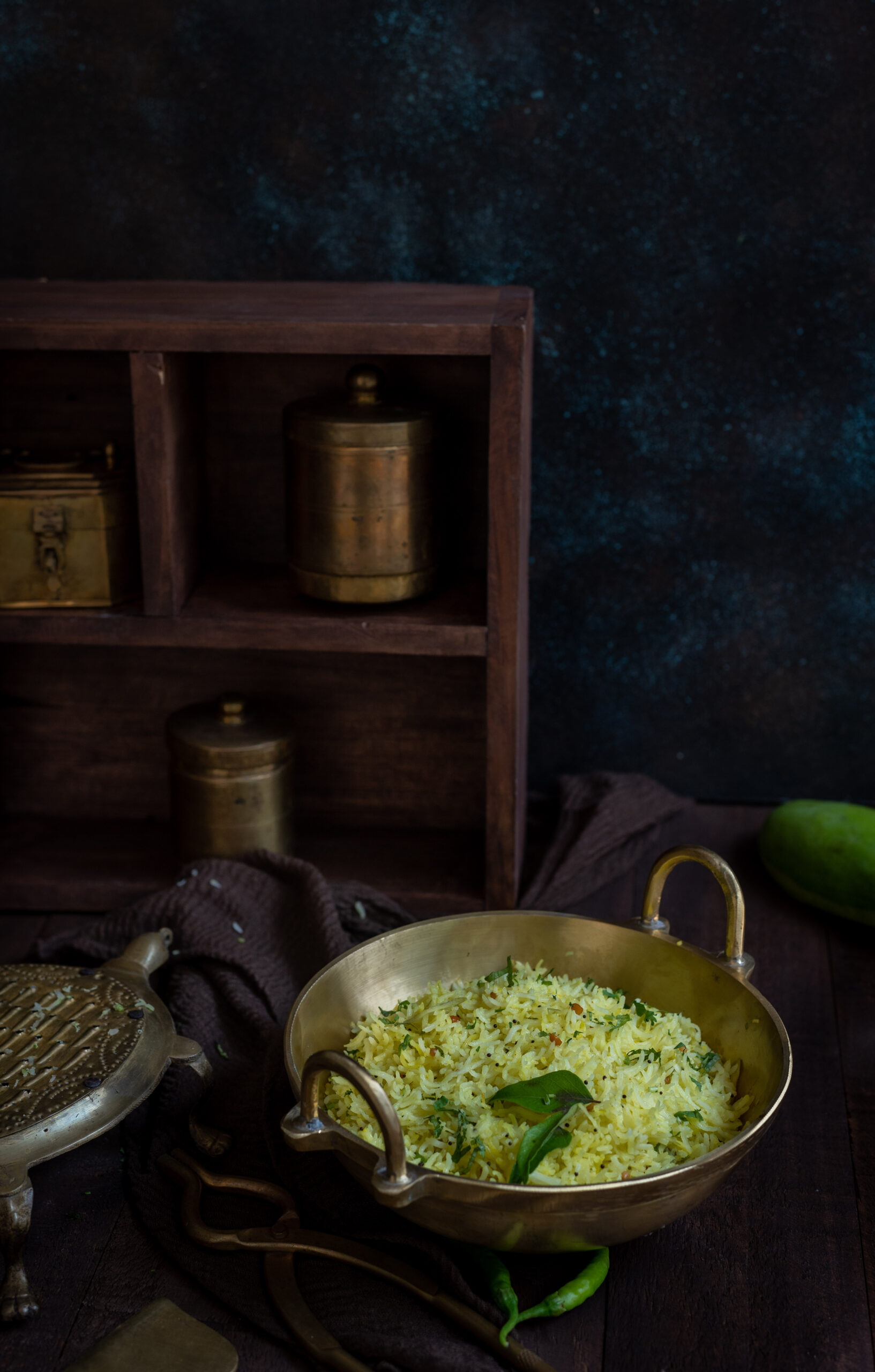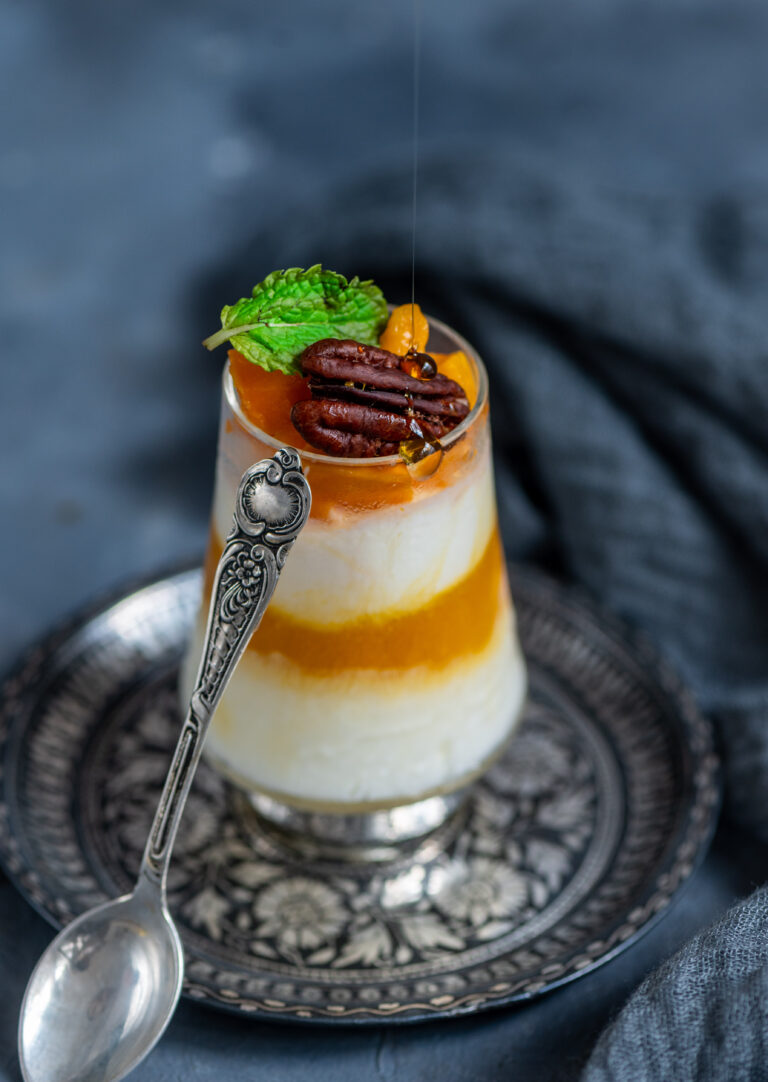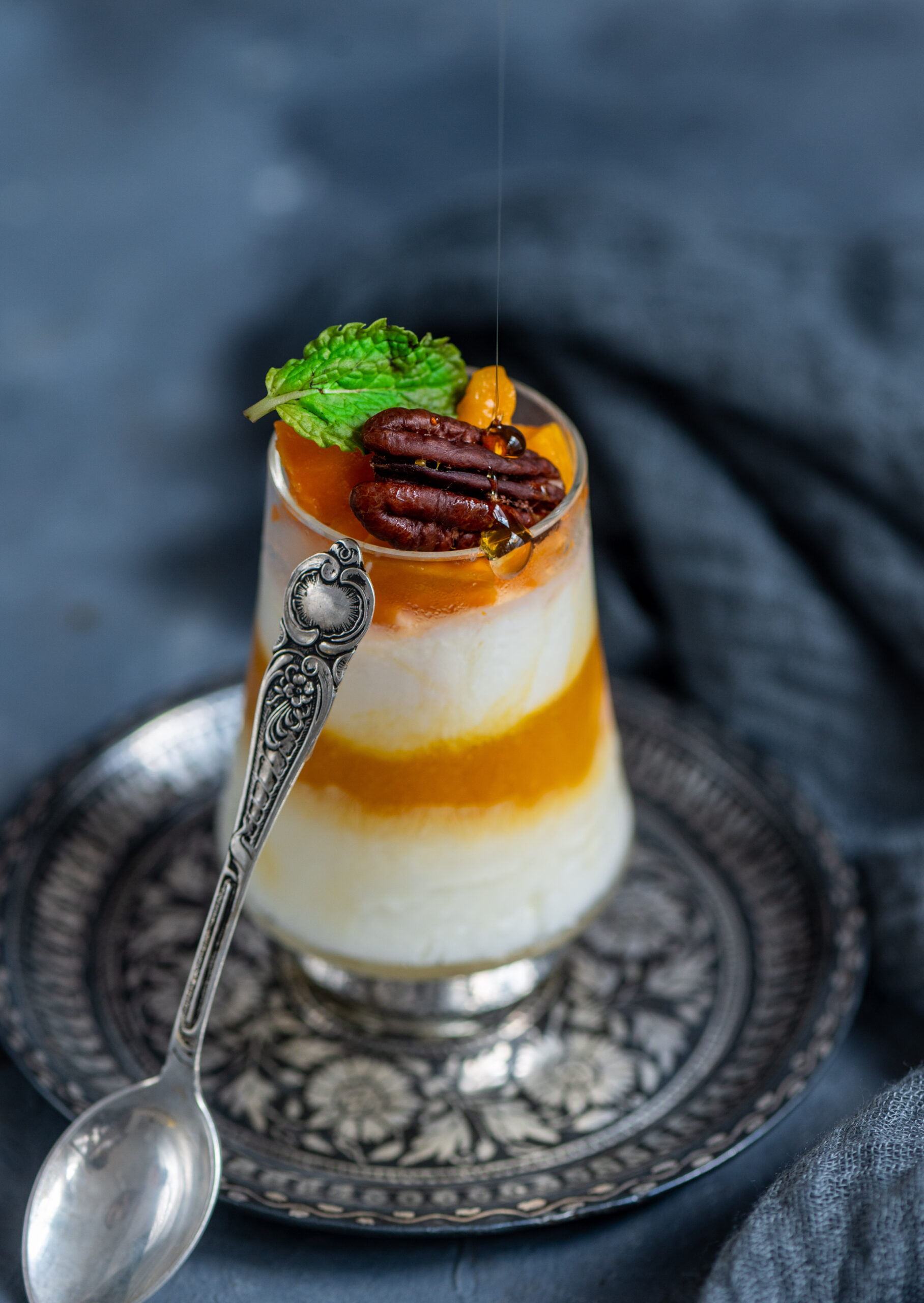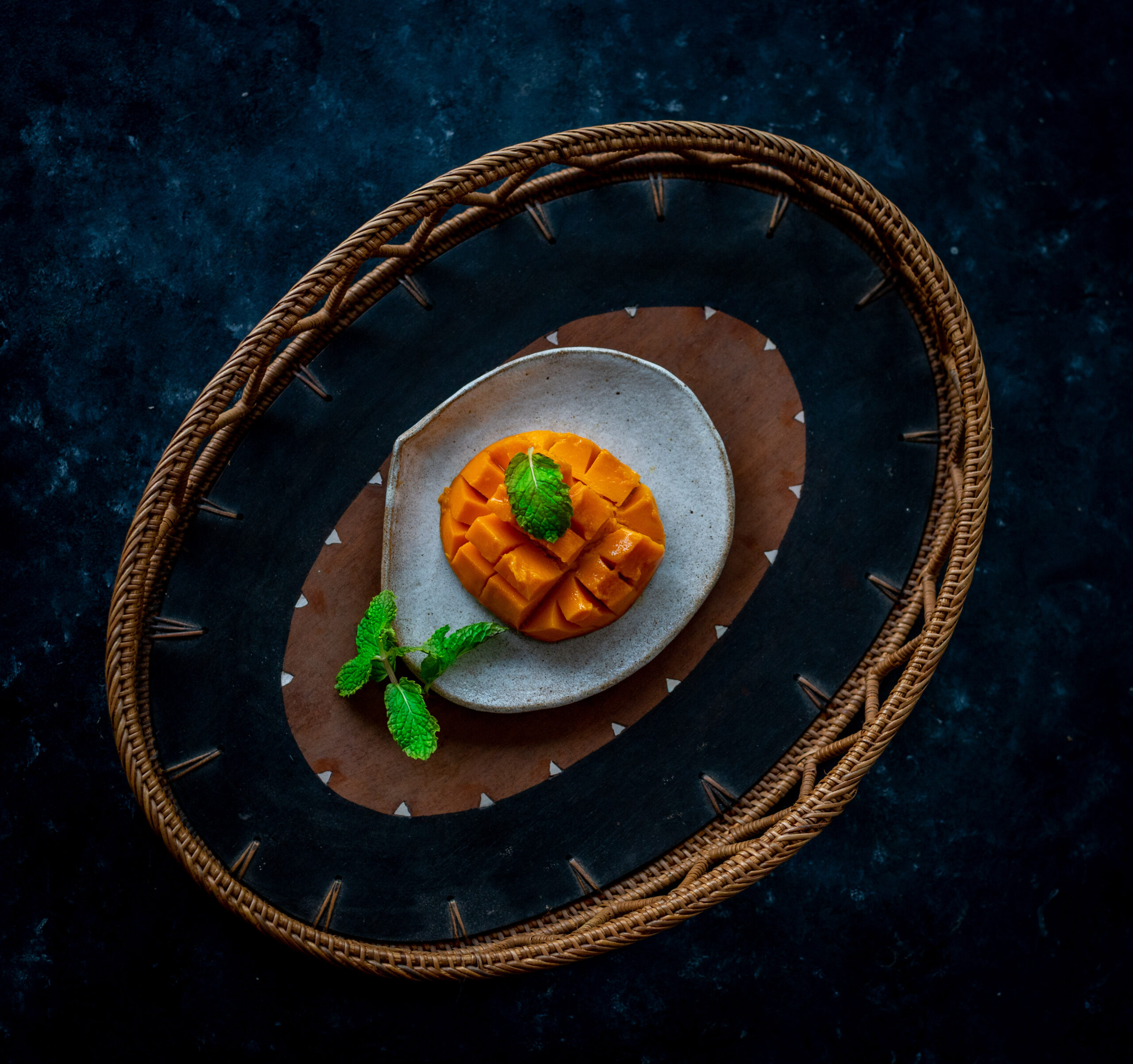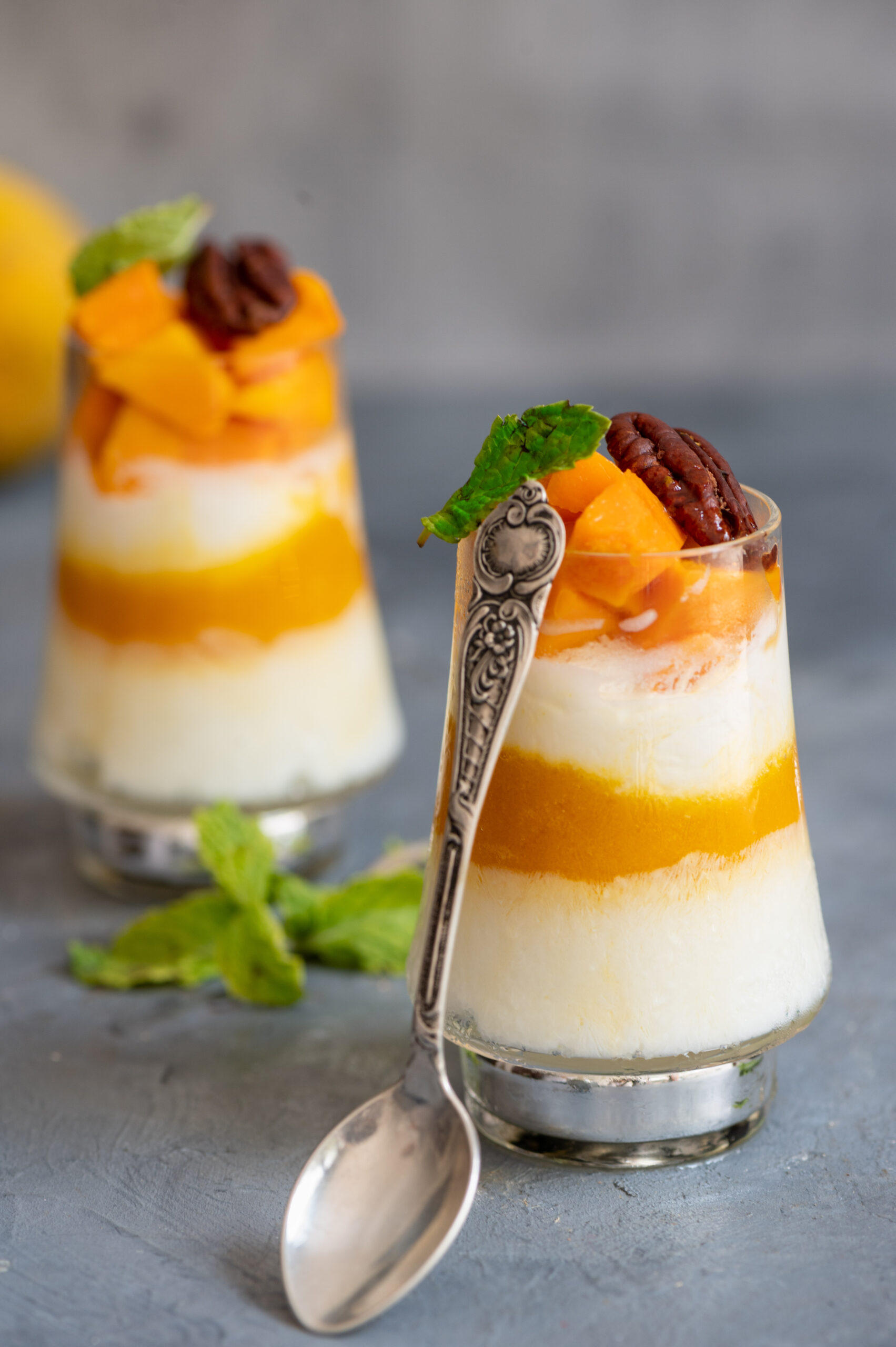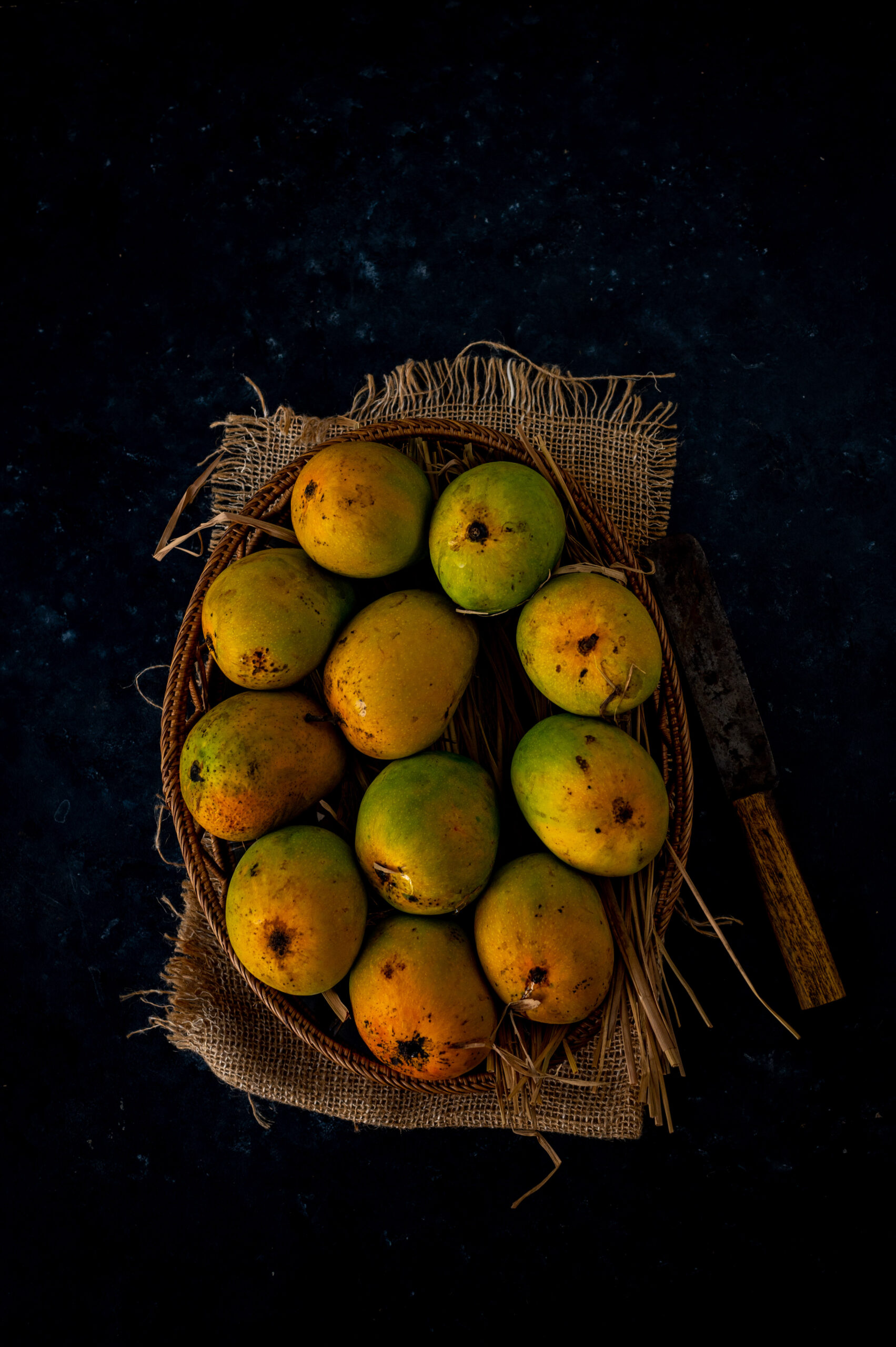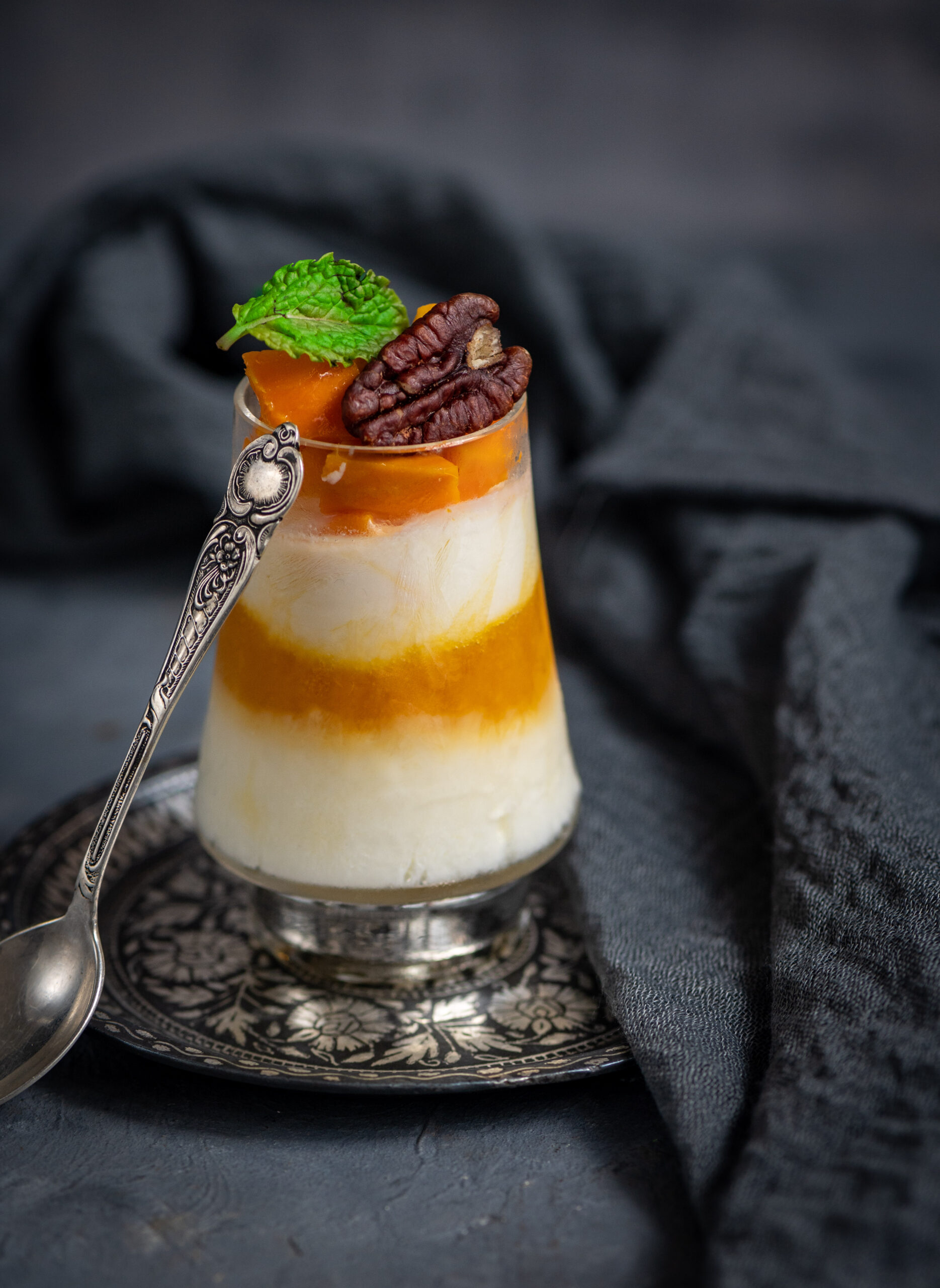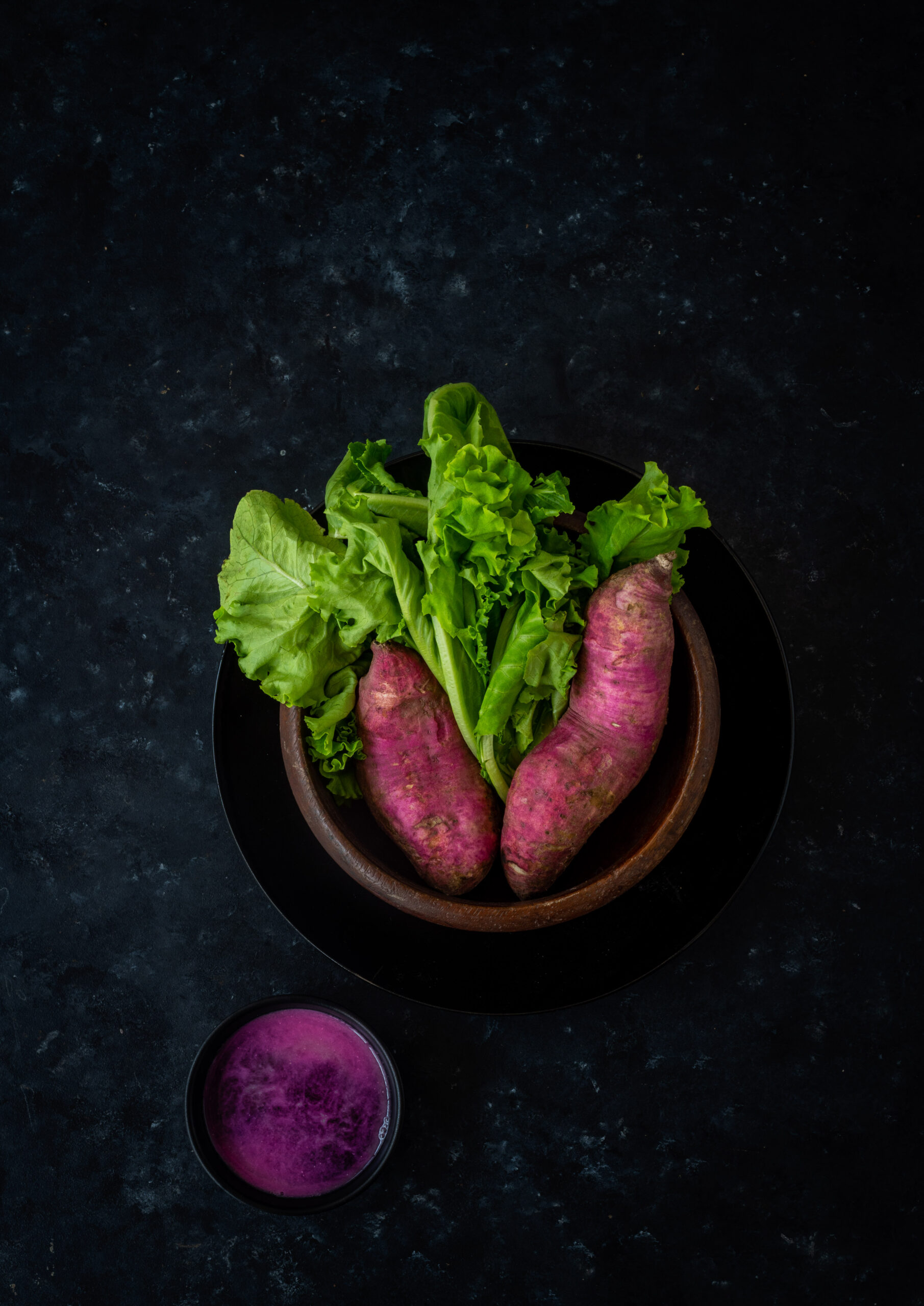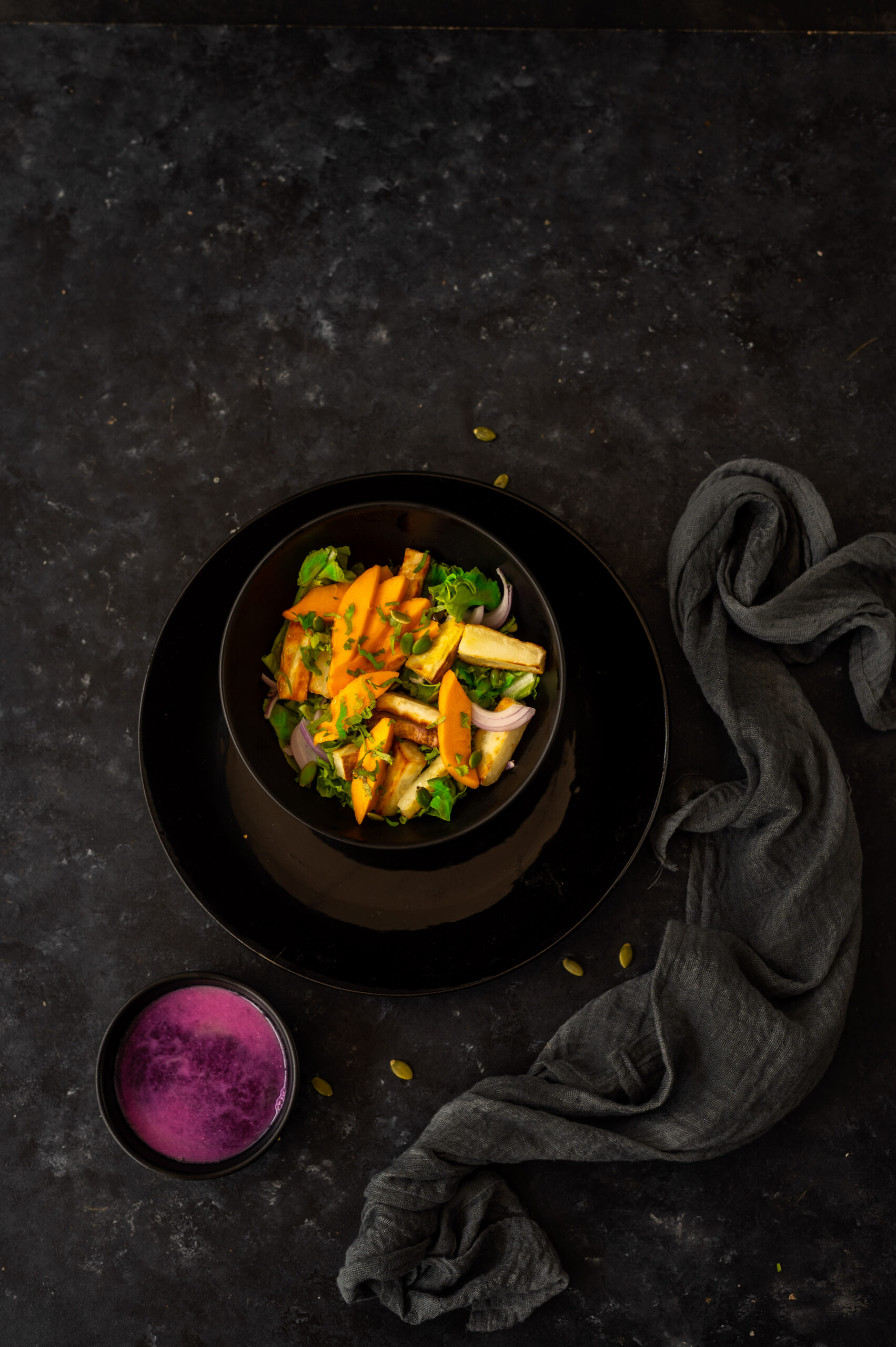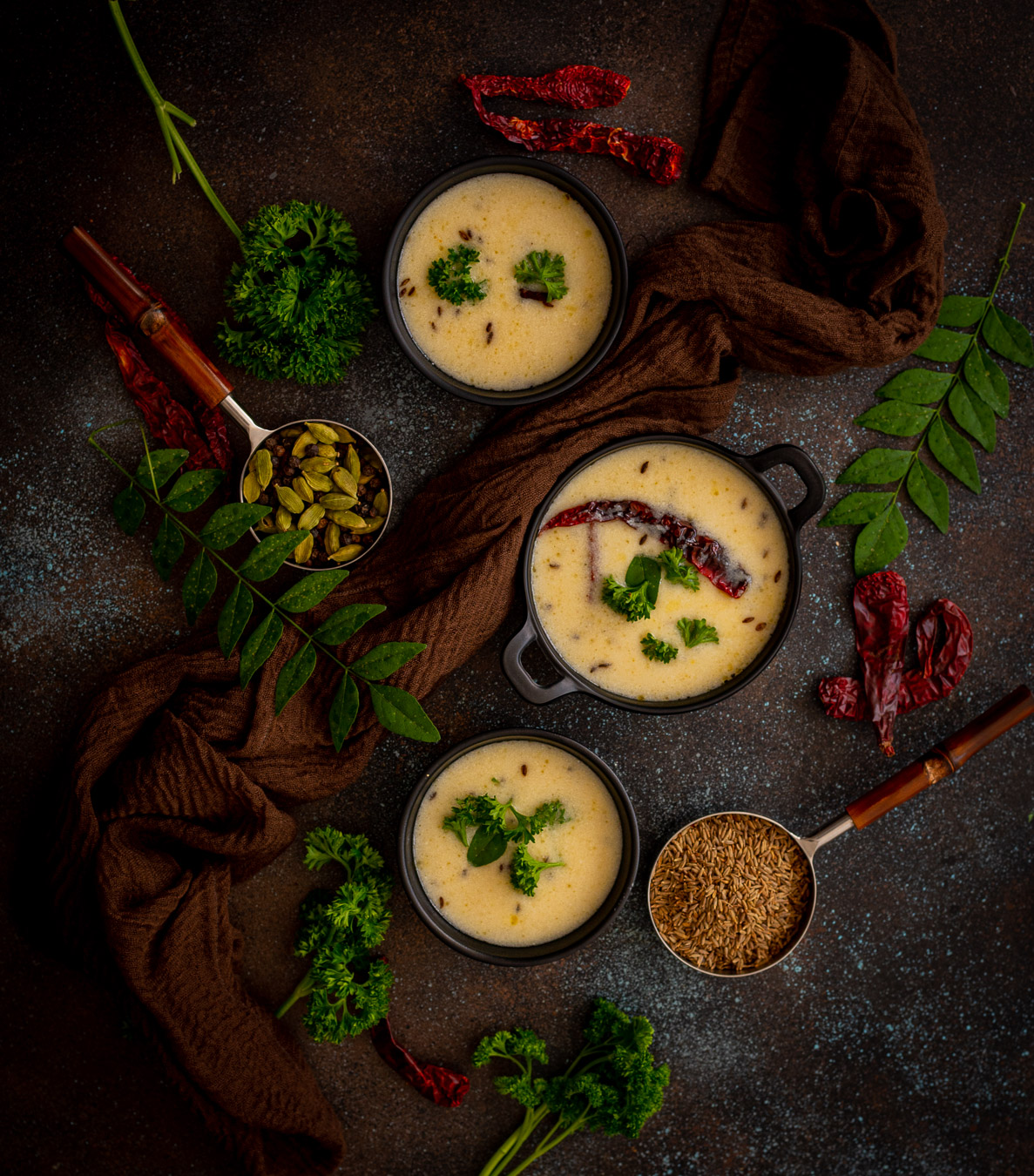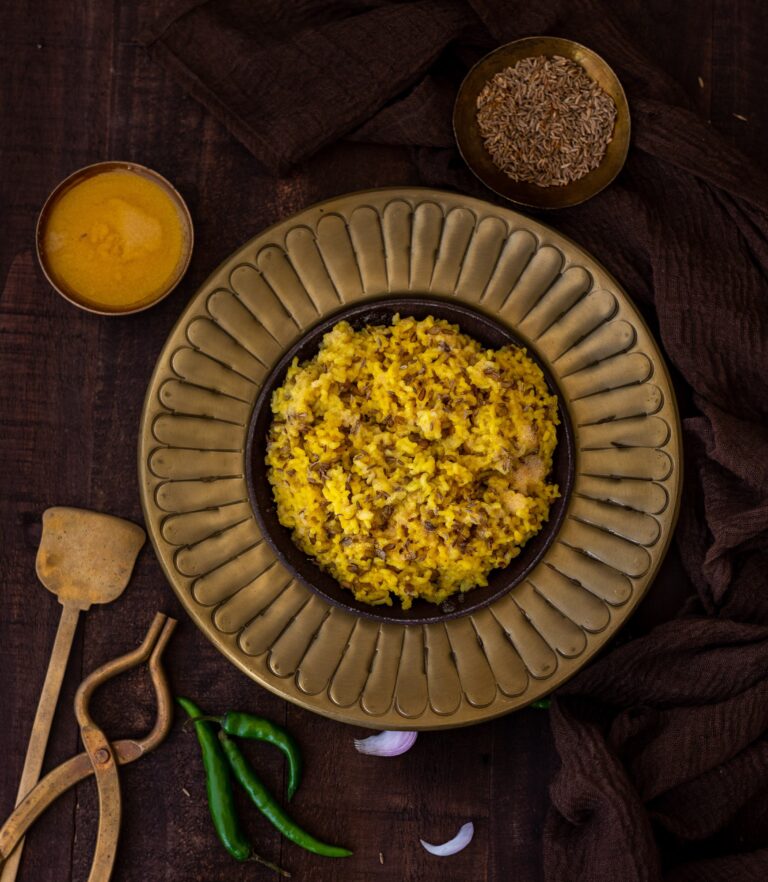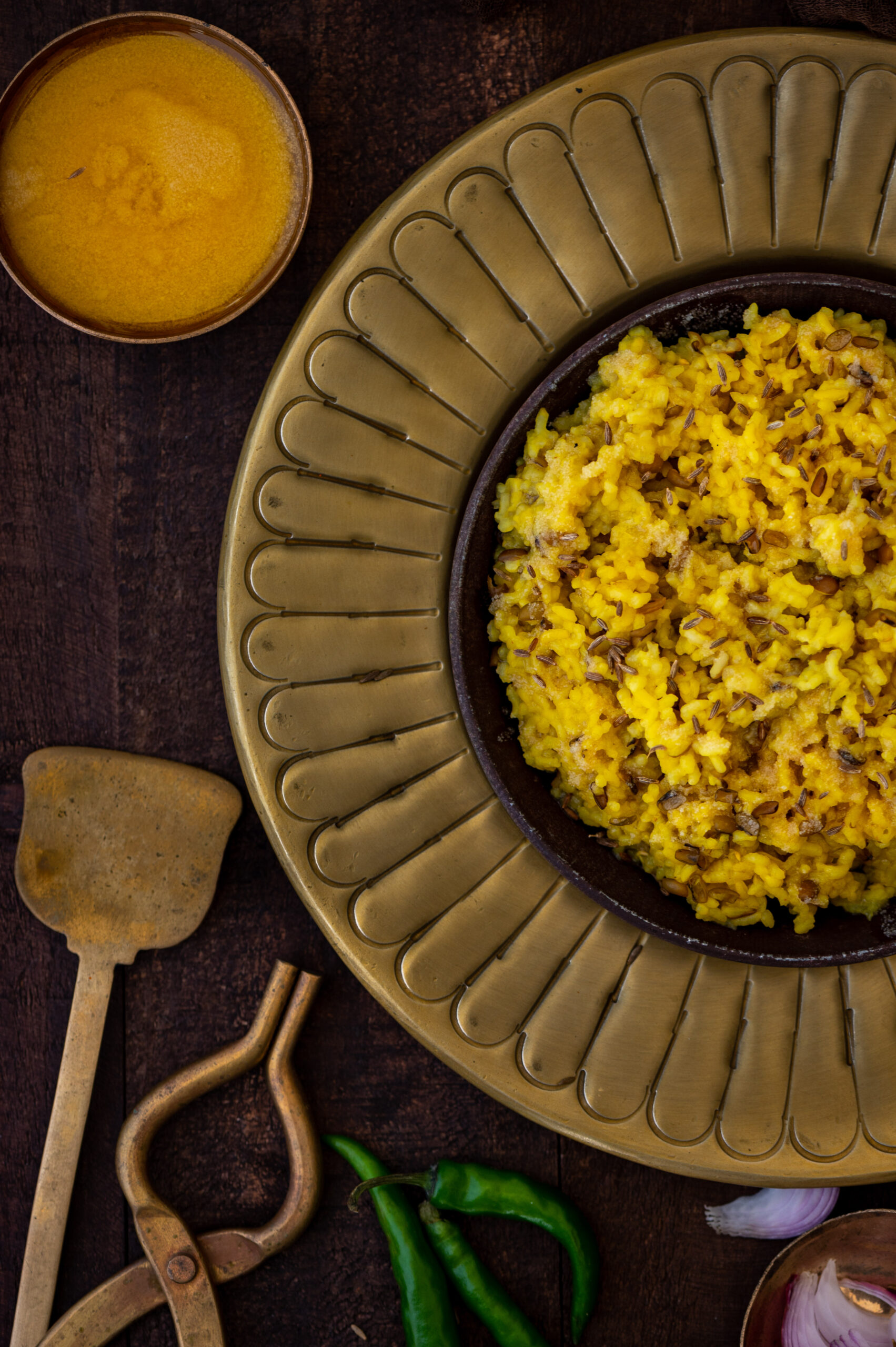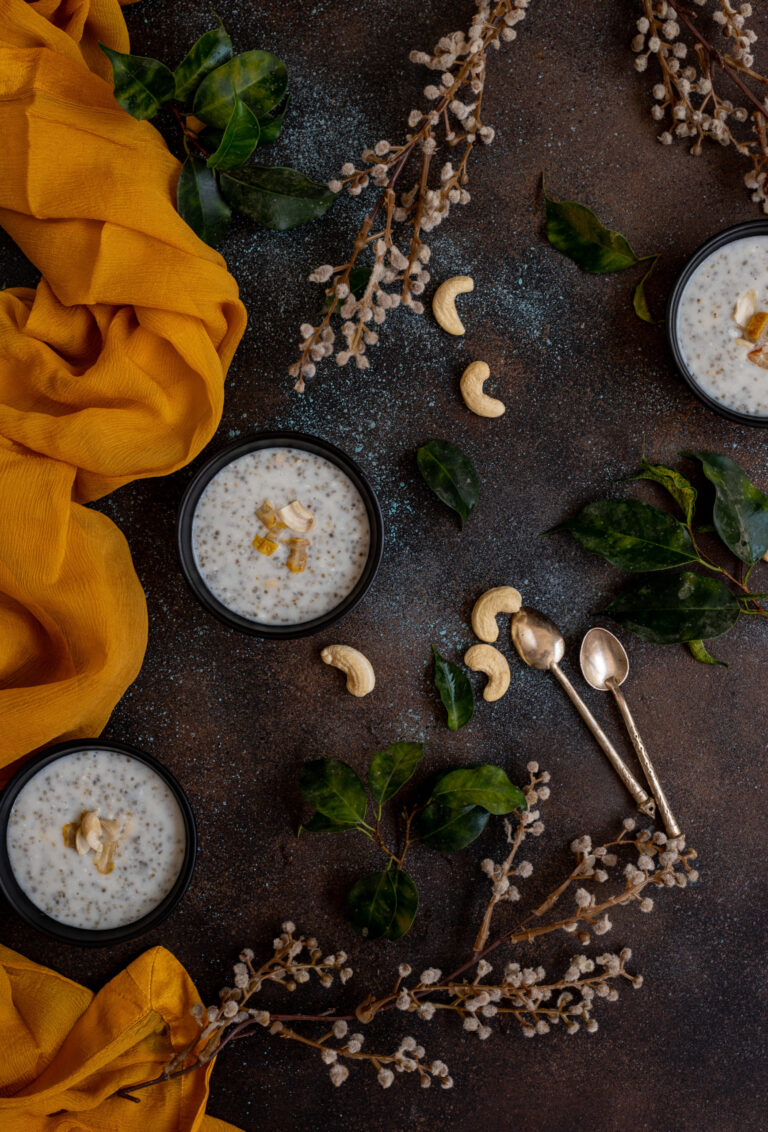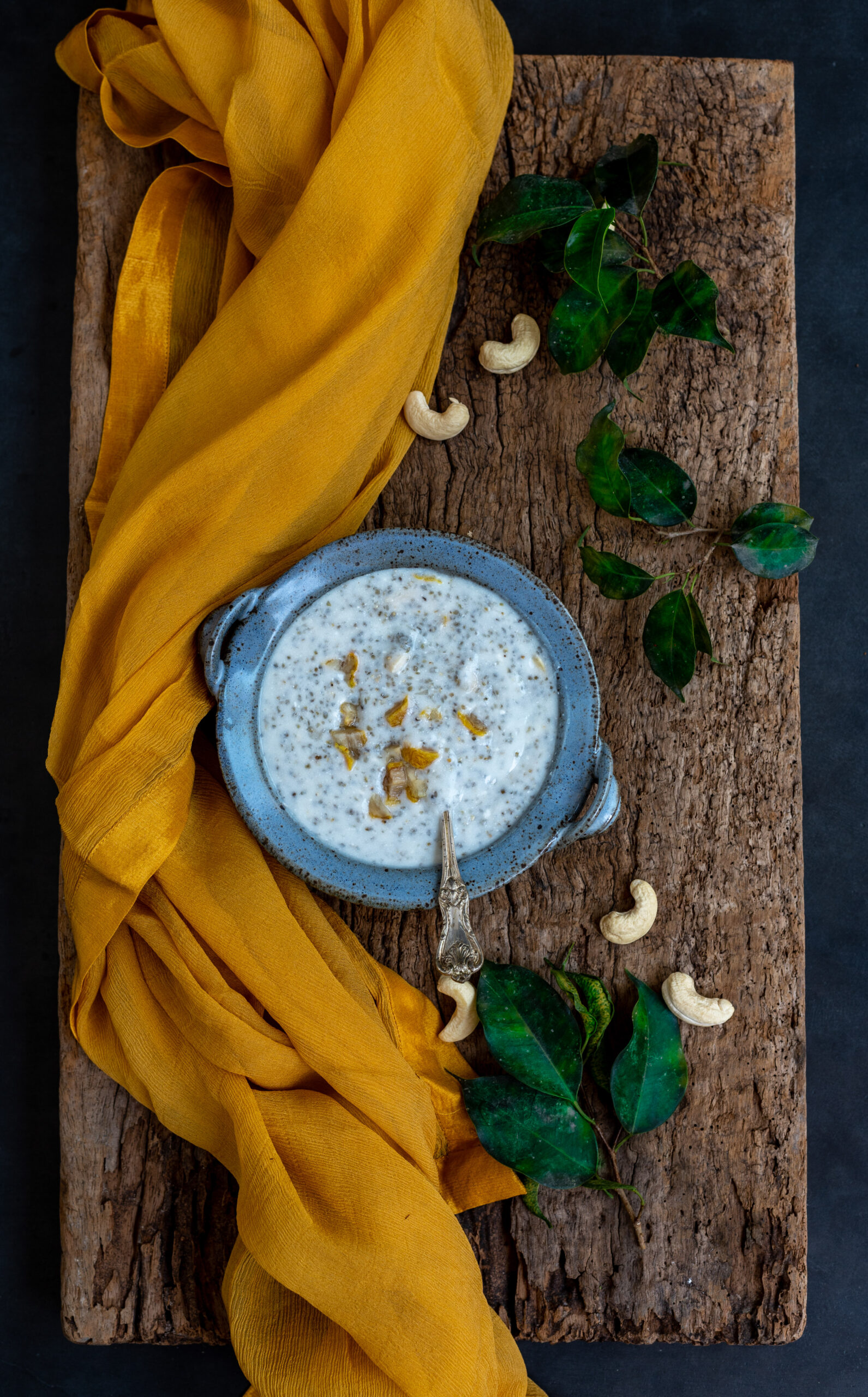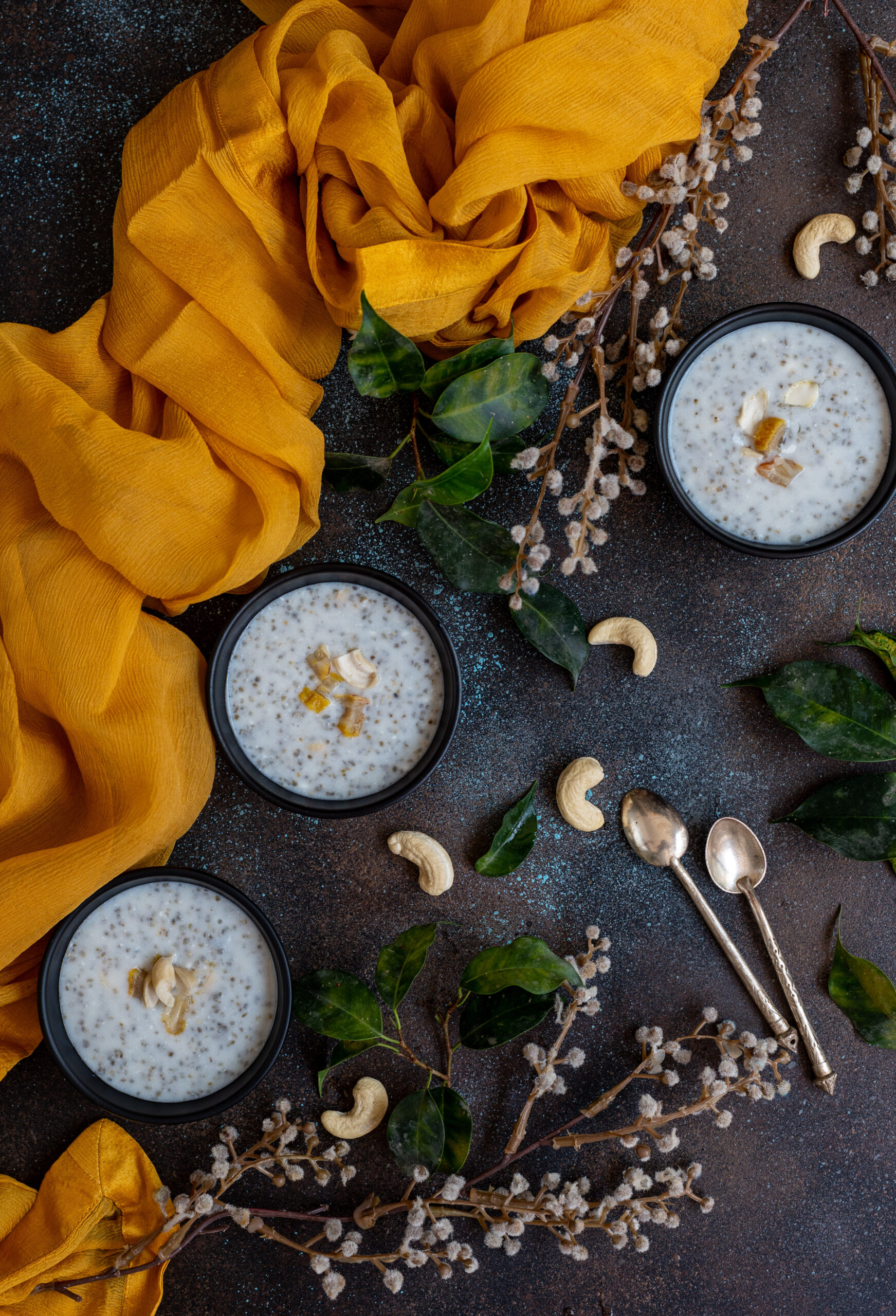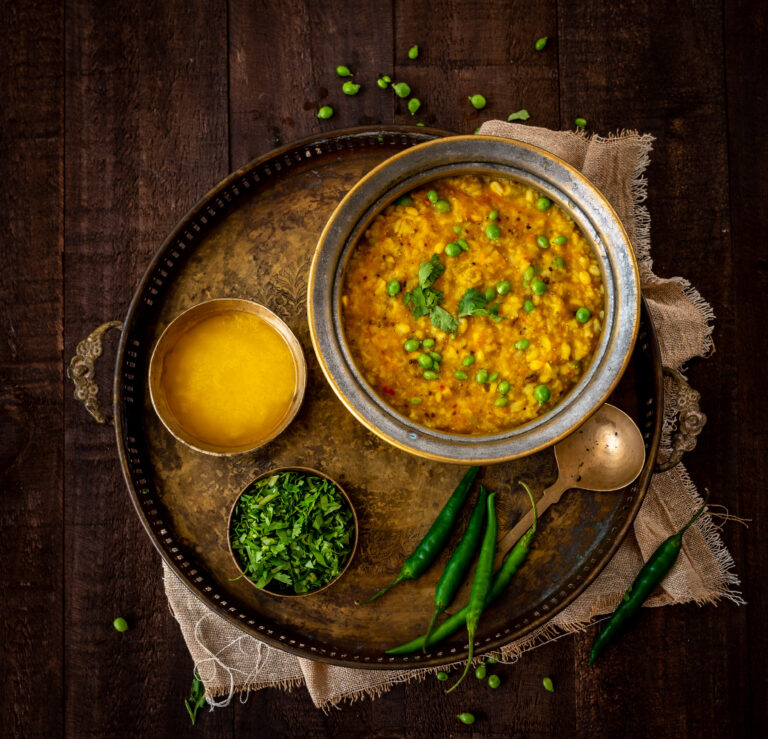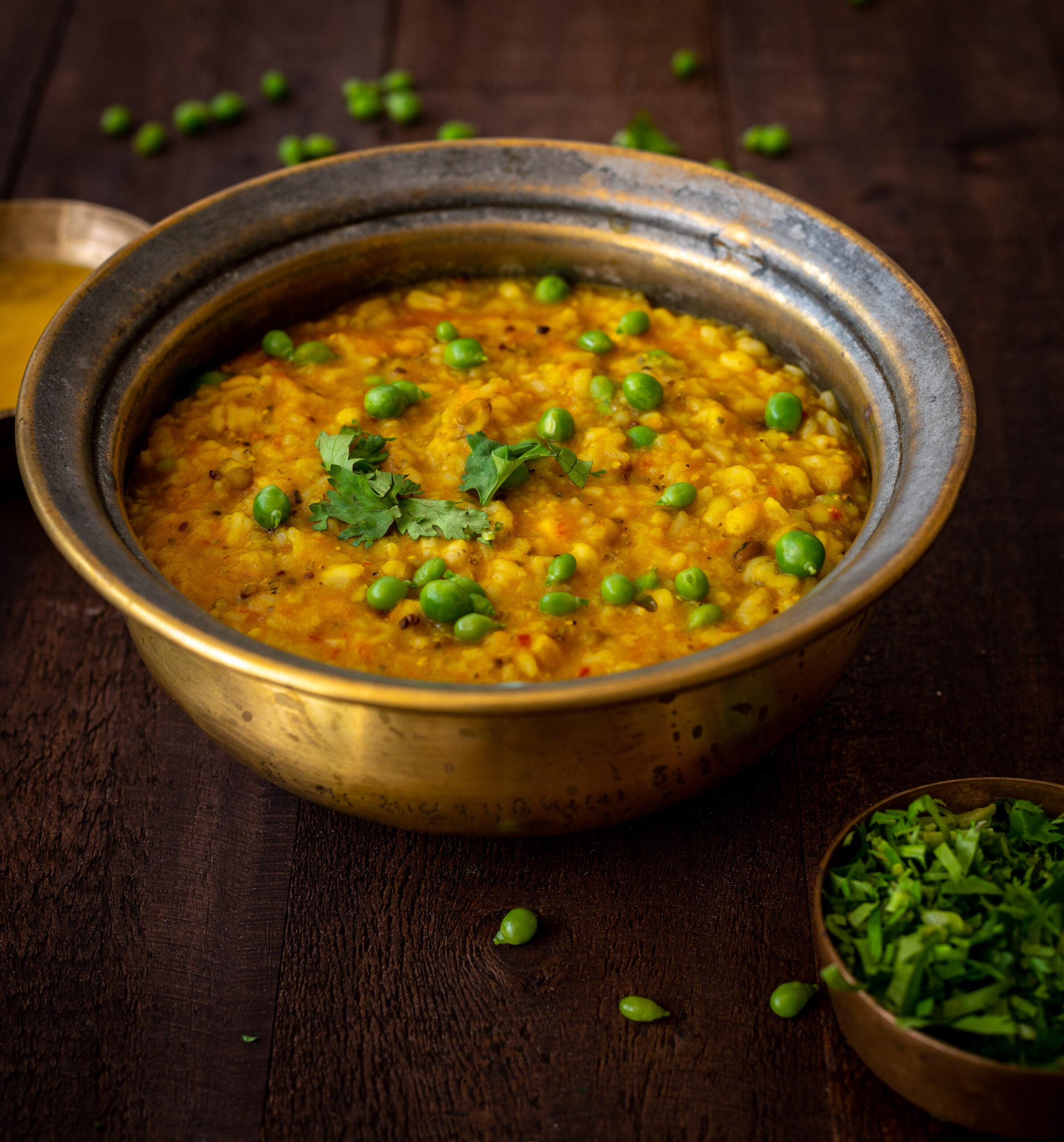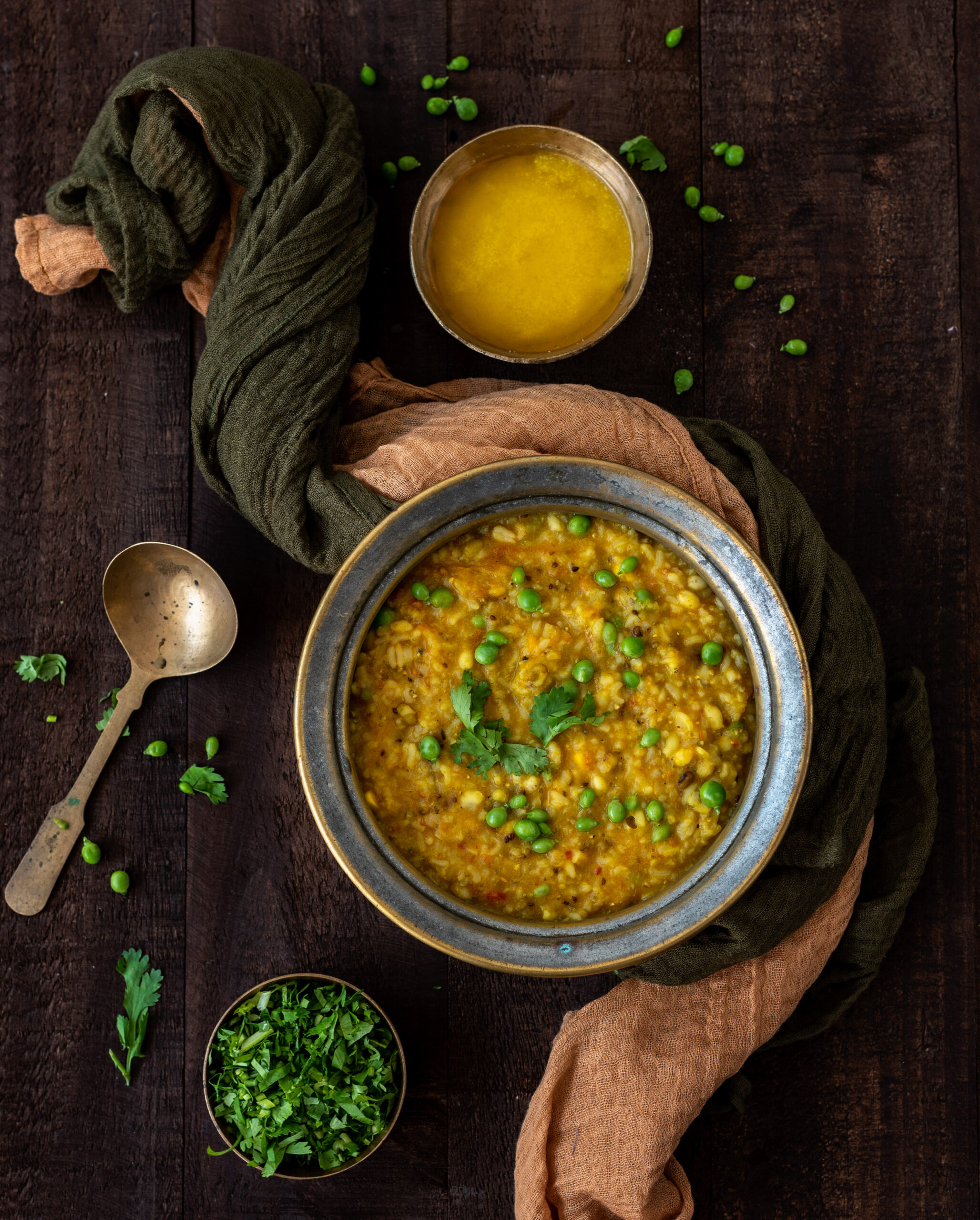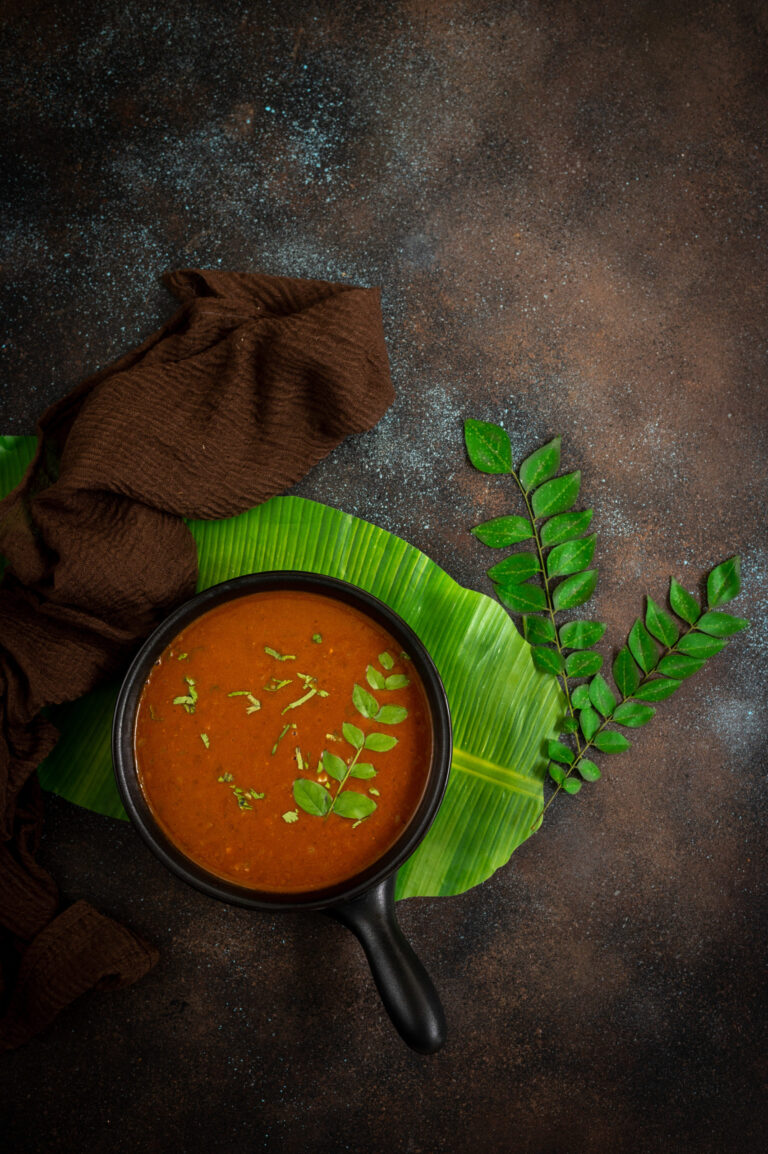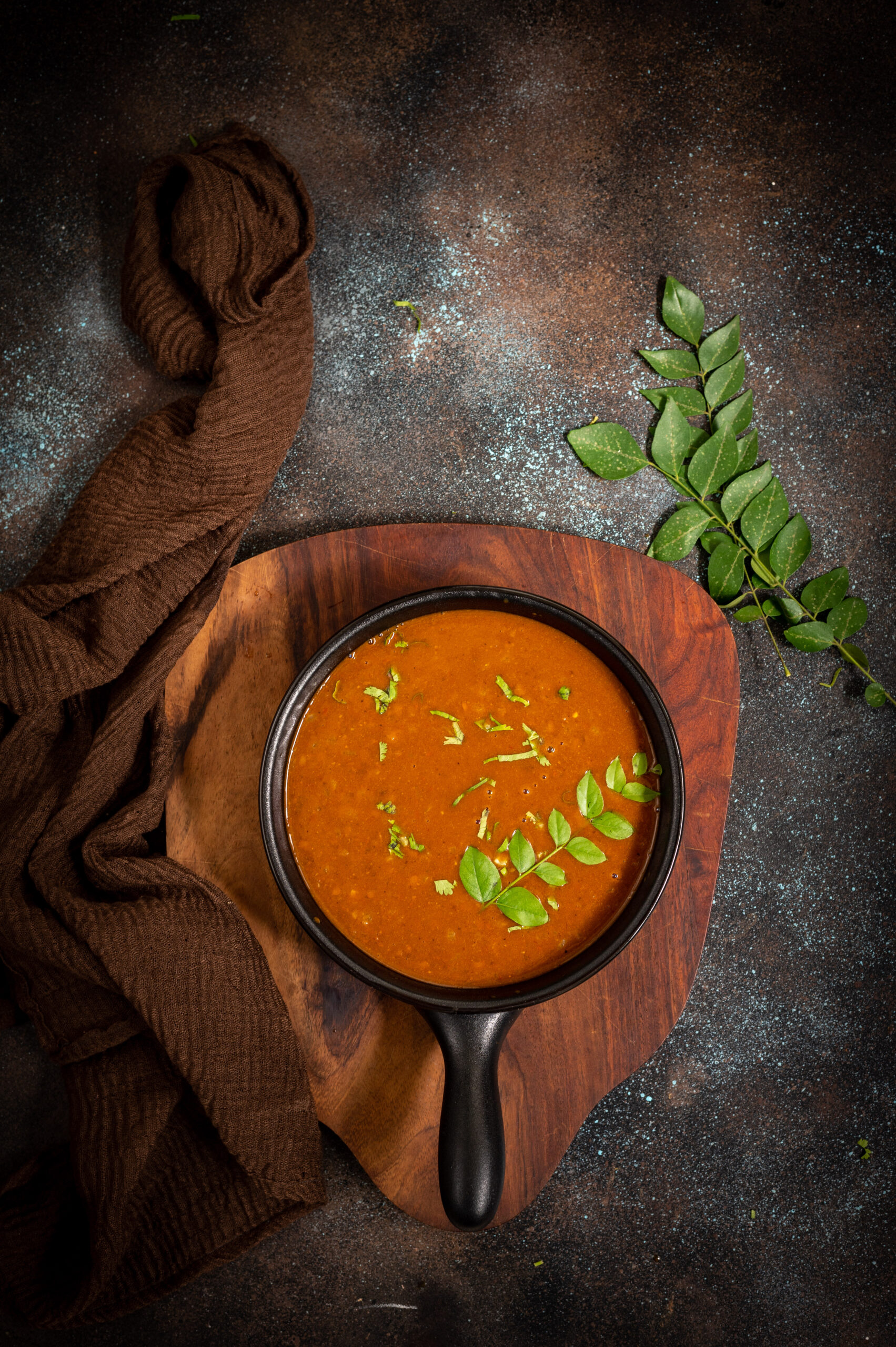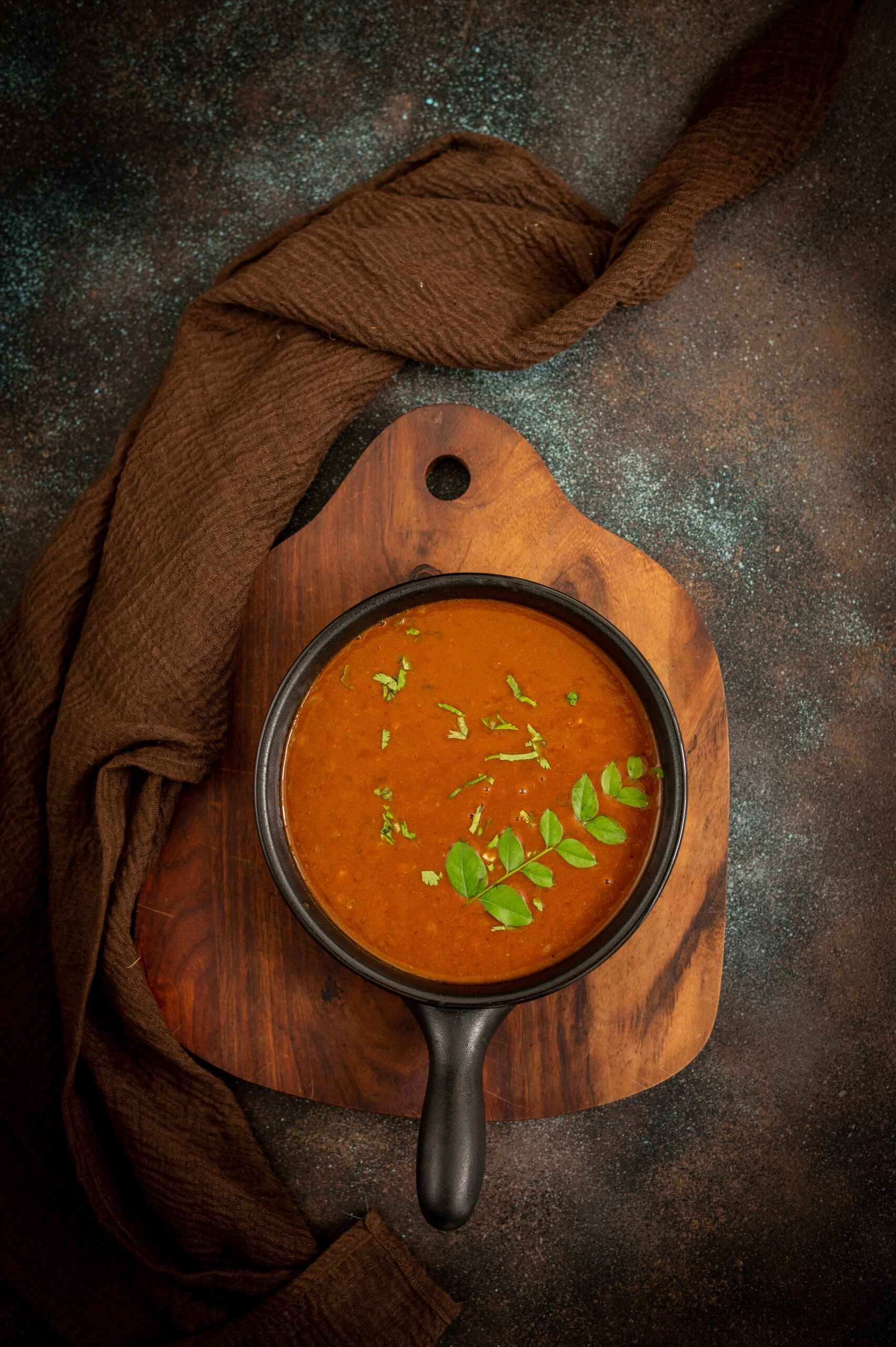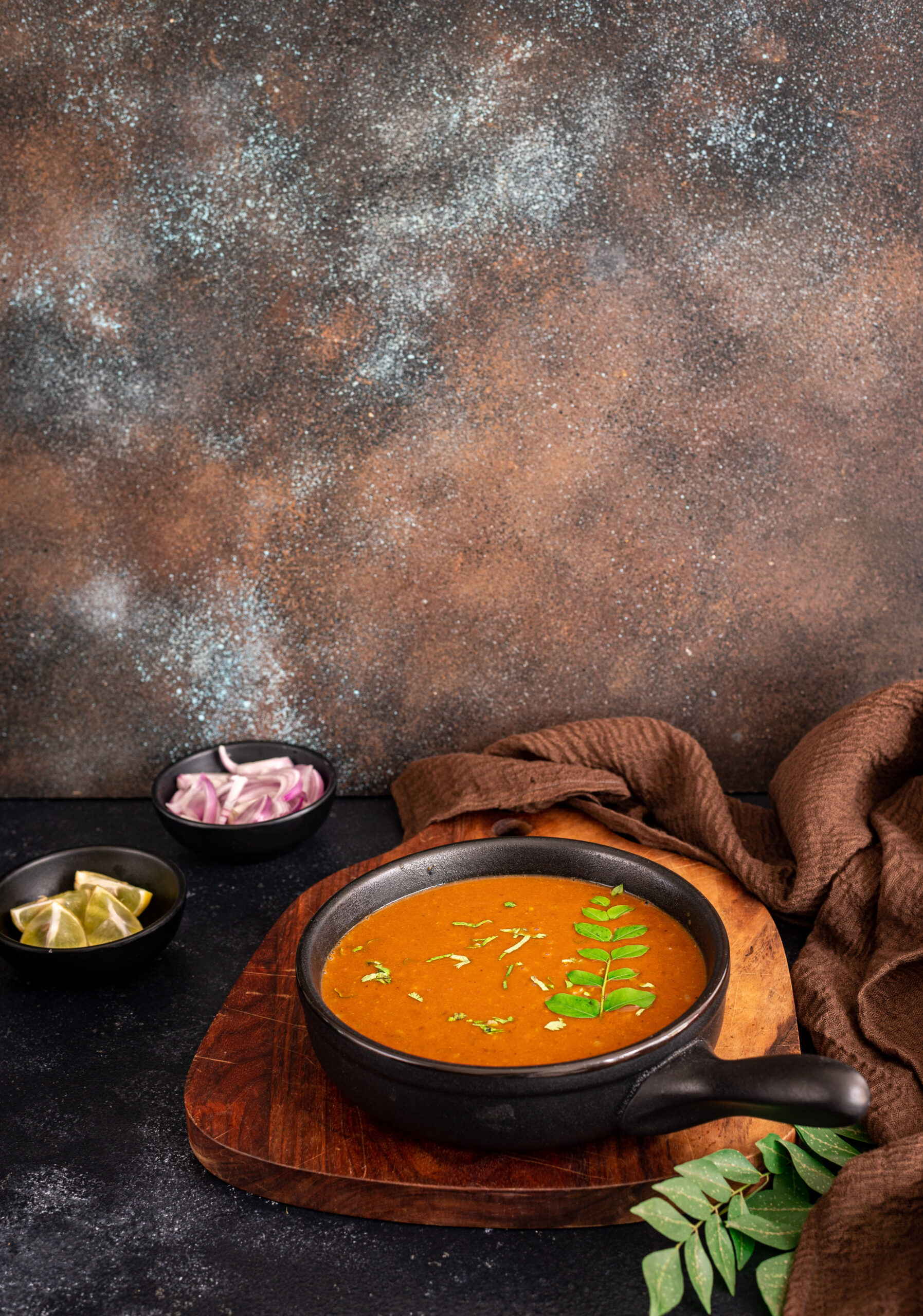This year’s mango series on my blog comes to a conclusion with a recipe that seamlessly leads into my next series: Indian dips and condiments. Call them chutneys, thovayals, sambals, pickles, relishes or by any name. They serve the purpose of enhancing a meal, and there are a huge range eaten across the subcontinent, often particular to certain communities. They tend to be heavy in spices and masalas so as to lend their strong flavours to otherwise mildly flavourful main dishes. It’s important to choose the right condiment, to complement rather than clash with the rest of the meal. Over the next few weeks, I’ll be sharing a selection of particularly tasty ones, which I hope you’ll enjoy pairing with mains of your choice. Today, I will be sharing the recipe for raw mango thovayal (or thogayal), a Tamil-style condiment that will elevate a variety of traditional and fusion meals.
I was born and brought up in Chennai, and I learnt Gujarati culinary traditions from my mother, who was also born and brought up in South India. She learnt her repertoire from her mother, who was raised in Gujarat but migrated, and who had replicated a menu that was as close to authentic as possible. However, it was also limited in terms of ingredient availability, as well as adapted to suit the climate here. This meant that certain winter vegetables consumed seasonally in Gujarat were not something my siblings and I, or indeed my mother and her own siblings, could have eaten growing up. There were certain recipes that I had no exposure to, and I am continuing to expand what I know about this cuisine. Many other food bloggers have provided inspiration, as has my sister, who lives in Mumbai and who learnt a multitude of dishes in the Gujarati Jain style from her mother-in-law. As you may know if you’ve been reading this blog for a while, I’ve also gained so much knowledge from my friends, who generously give their recipes not only to me, but encourage me to share them with my readers too.
Adaptability, resourcefulness and innovation are the traits of all good cooks everywhere, and a sense of culinary curiosity is what makes preparing everyday meals exciting. My own personal style is a medley of Gujarati cuisine, South Indian cuisines, Macrobiotics training, enthusiasm for veganism, travels aboard and growing up in a multi-cultural setting. As kids, while we ate Gujarati food at home, we also spent lots of time at the homes of our Tamil and Malayali neighbours (like Girija, whose mother made a brilliant ishtew) on practically a daily basis, thus enjoying a wonderful diversity of snacks and meals. My own children are now a third generation of Gujaratis who were raised in South India (I often jokingly say that their Tamil skills are better than their fluency in their mother tongue). If my own upbringing was multi-cultural, my children’s was even more so, and they have travelled and been exposed to even more of the world than I had by their age. Today’s generation and the generations to follow enjoy a blend of influences and experiences, and their food preferences reflect the same.
Coming back to thovayal, my recipe today is really a culmination rather than a combination of my own varied influences and experiences. It’s a raw mango thovayal made up of the memories of hundreds of meals at friends’ homes, prepared with simple ingredients that I happened to have in my garden and kitchen. In my home, this side dish is usually eaten with white dhokla (I’ll share a recipe for that soon). Dhokla is usually eaten with green chutney, but I prefer it with this thovayal, as the raw mango is a wonderful coolant for Chennai summers. Can you think of a more perfect example of a Gujarati-Tamil cultural melange?
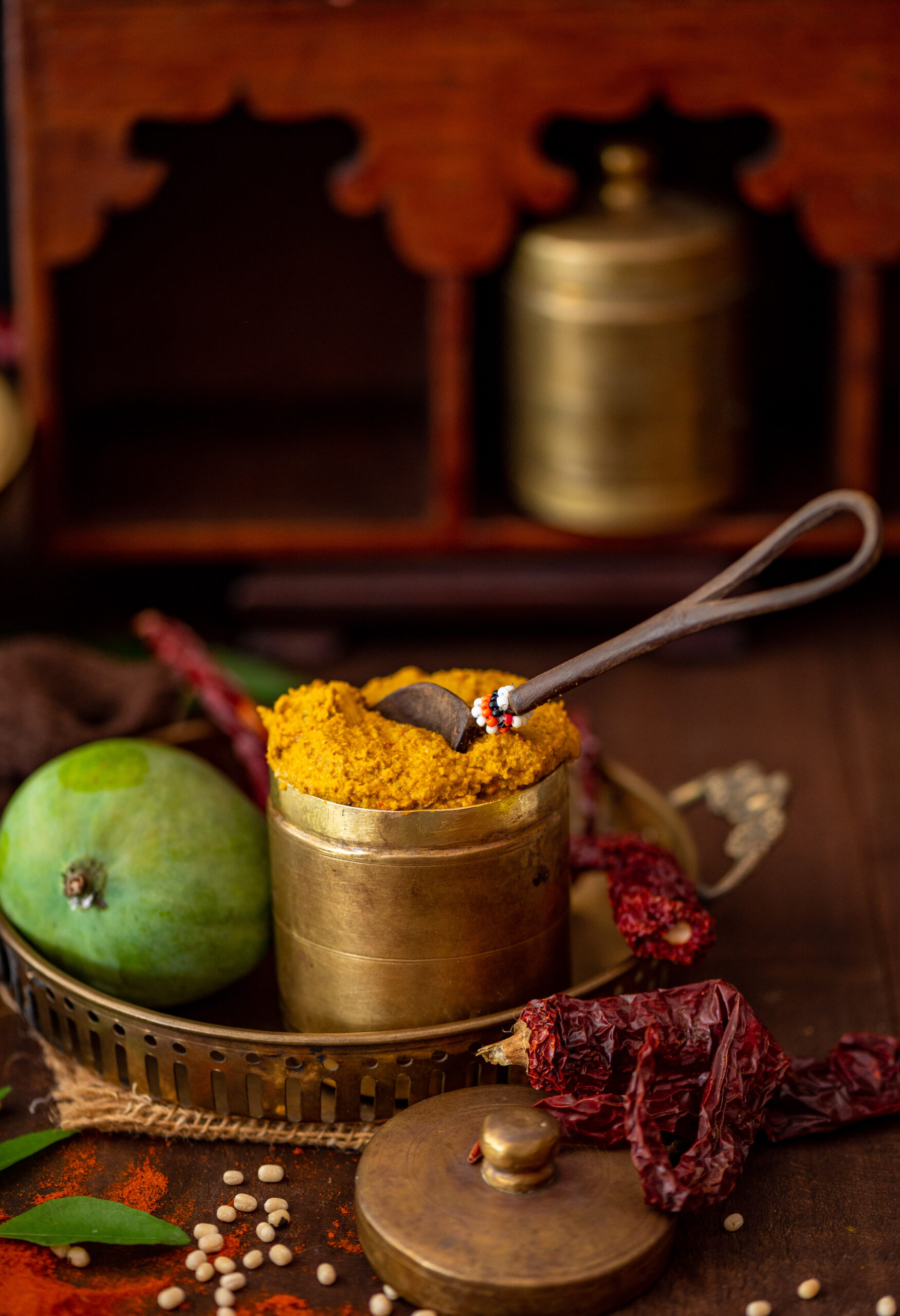
Raw Mango Thovayal
(Yield: 1 cup)
1 cup cut, peeled raw mango
1 teaspoon cumin seeds
2 teaspoons urad dal
2 green chillies
2 dry red chillies
6-10 curry leaves
3 tablespoons fresh coriander leaves
½ cup coconut
2 tablespoons roasted gram (optional/alternative: peanuts)
2 teaspoons groundnut oil or sesame oil
Salt to taste
You can make thovayal with a variety of bases, simply replacing the raw mango. Coconut is popularly used as a base, for example. I use green chillies in mine so that the thovayal retains a refreshing green colour, but you could use garlic for the spice quotient instead.
To prepare this recipe, simply add all the ingredients together in a mixer jar and blend coarsely. Add no more than 3-4 tablespoons of water when you do so.
The thovayal will be of a thick consistency, comparable to a chutney. It can be stored in the refrigerator for 4-5 days.
Enjoy it as a condiment with any meal of your choice (do let me know in the comments how you pair it, please!). I think it could also work as an excellent marinade for chicken, or if added to roasted potatoes to enhance their flavour. It all comes down to your creativity.
I hope you’ve been making the most of the mango season through the wide range of recipes I’ve shared here that celebrate the fruit in both raw and ripe forms. In case you want to catch up, this is the big list of the delicious mango dishes I’ve posted over the years: vegan raw mango dal, raw mango rice, mango twist, mango osaman, mango lassi, mango salad, sweet and spicy mango pickles, ripe mango rasam and curry leaf and raw mango cooler. Here’s to many more seasons of culinary plenitude!


